Vigur is a small island close to the town Ísafjörður in the north-west of Iceland. The island is home to a variety of birds like Atlantic puffins, Arctic terns, or black guillemots. Very special on the island are, however, common eider ducks. Among many birds, seals at times visit the surroundings of Vigur as well. In this blog entry I write more about the wildlife on Vigur Island.
Ísafjörður
In Iceland I saw places I never would have thought to visit one day. Ísafjörður is one of these places. A small town in the northwest of Iceland.
But what brought me to Ísafjörður?
Of course, wildlife.
Thus, I did not go to Ísafjörður, because I wanted to visit exactly this town or, to be honest, the close-by Vigur Island.
I went to Ísafjörður because of the Arctic foxes in the close-by Hornstrandir Nature Reserve. I write more about these Arctic foxes in another blog entry.
And what if I wouldn’t have planned to visit the Hornstrandir Nature Reserve?
Well, I would have missed a very beautiful Ísafjörður and all the beautiful wildlife on Vigur Island!
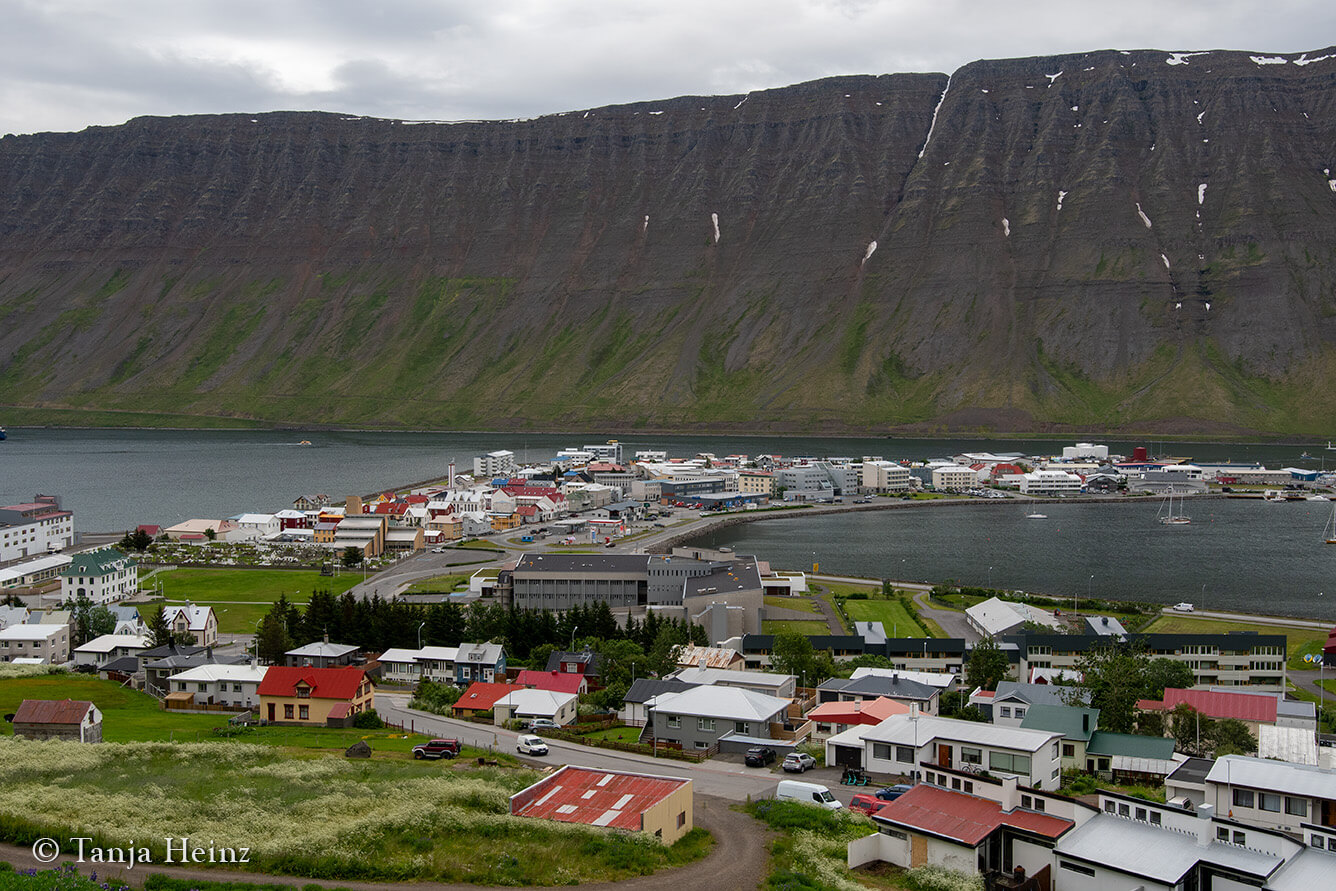
With less than 3.000 inhabitants, Ísafjörður is still the largest town in the Westfjords. It is the starting point for many tours in the western part of Iceland – be it individually or organized.
Surrounded by beautiful landscapes, Ísafjörður is spectacular to visit.
Snow-covered mountains and a cloudy sky already indicated a rather unusual summer for a Central European like me.
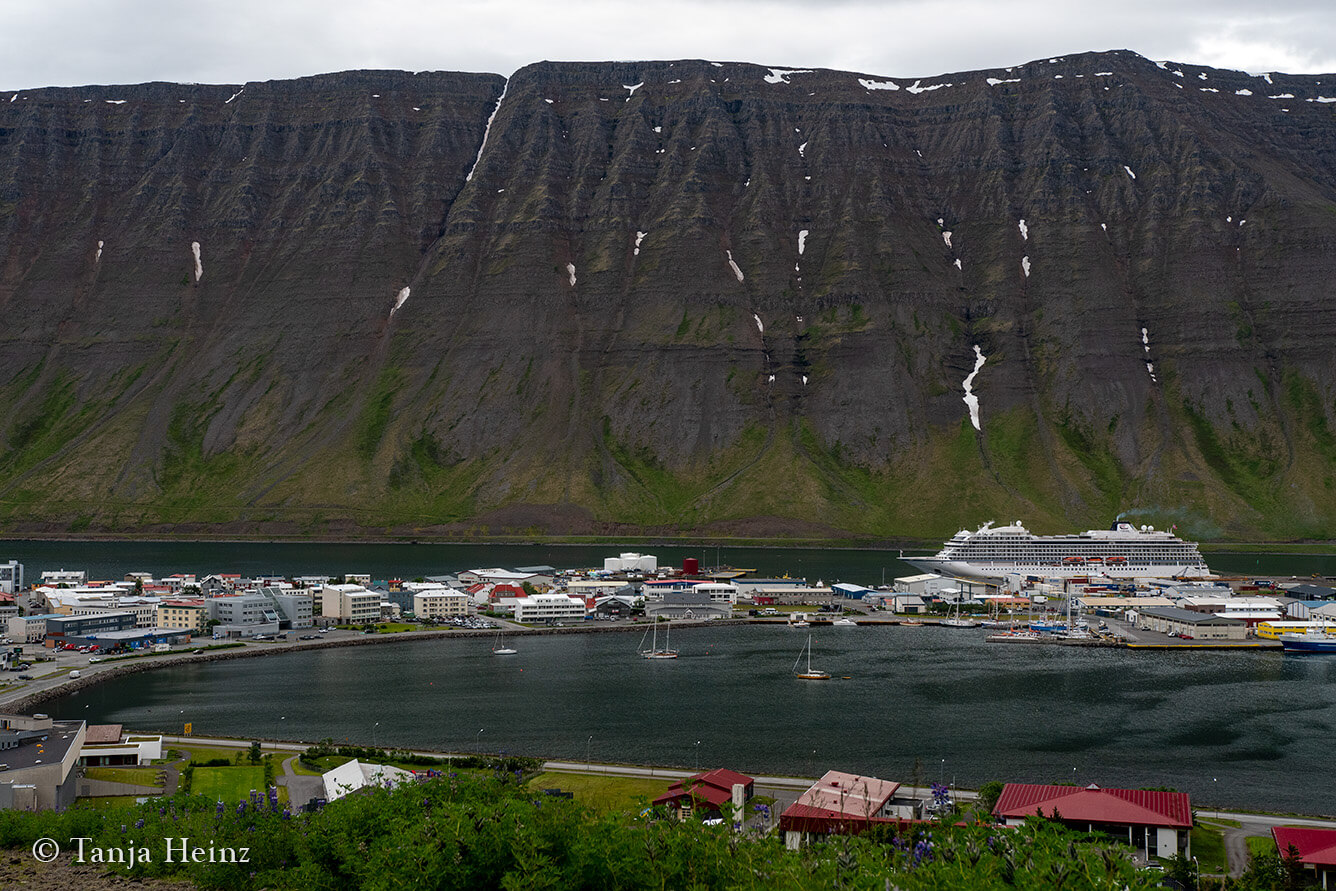
Interestingly, Ísafjörður is also an important place for students who study, for example, Coastal and Marine Management. There are in total four degree programs offered by the University of the Westfjords.
Thus, Ísafjörður also can be considered as a student town.
Although... it did not really feel like a student town.
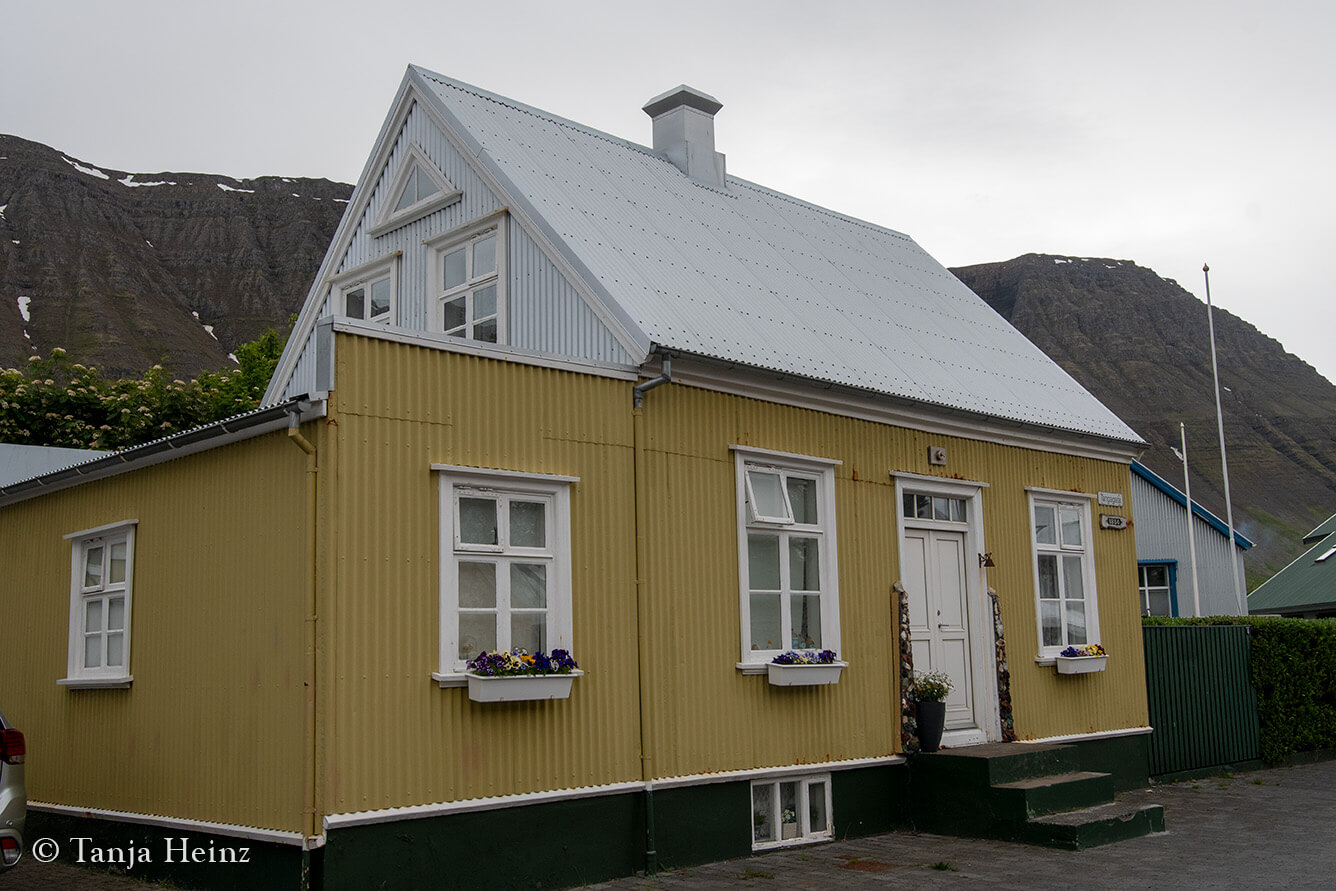
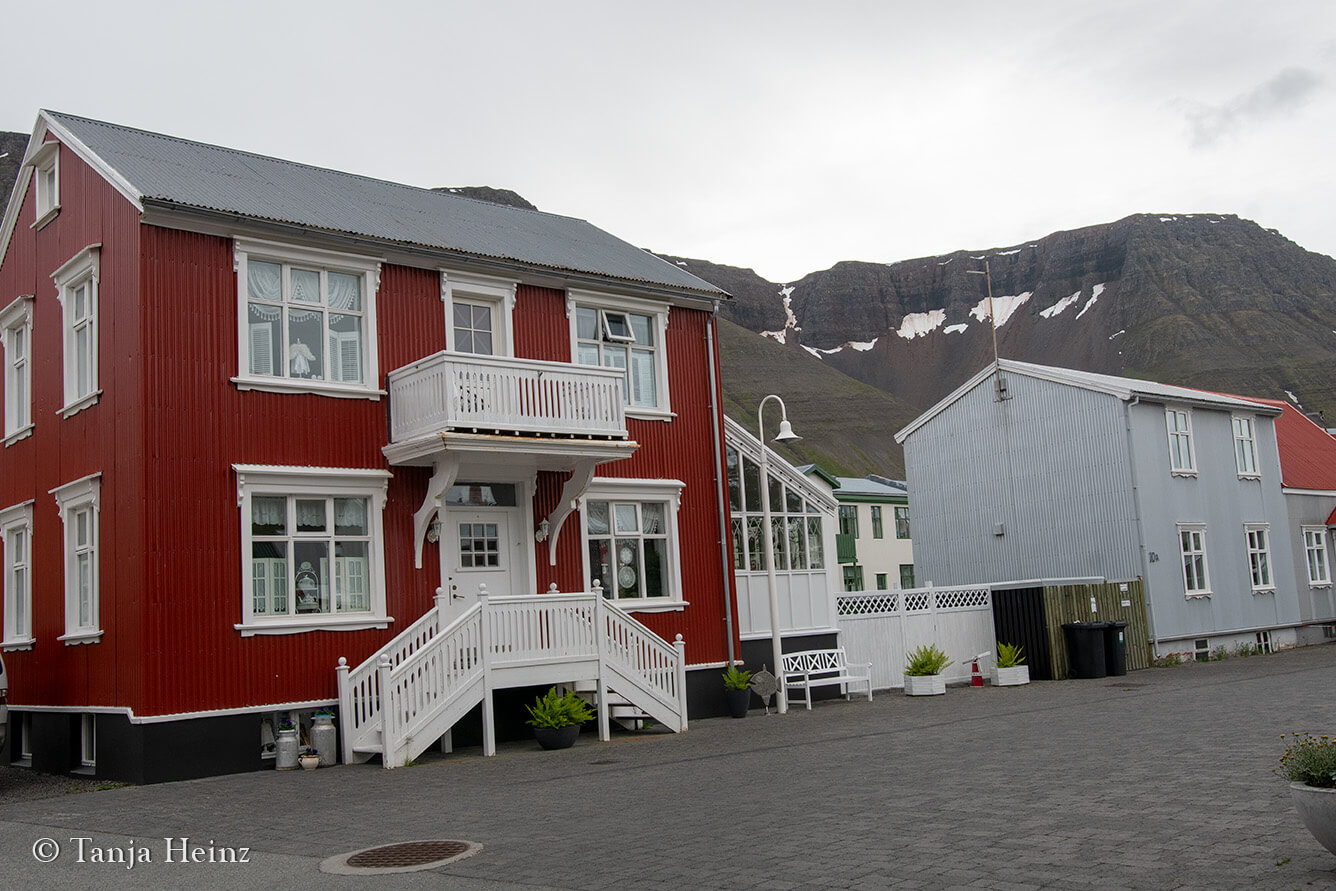
On one day it rather felt like a tourist place.
Yes! A tourist place!
The streets were full with people!
But did all those people in the streets arrive by plane at the small airport (the red building in the photograph) located close-by to the centre of Ísafjörður?
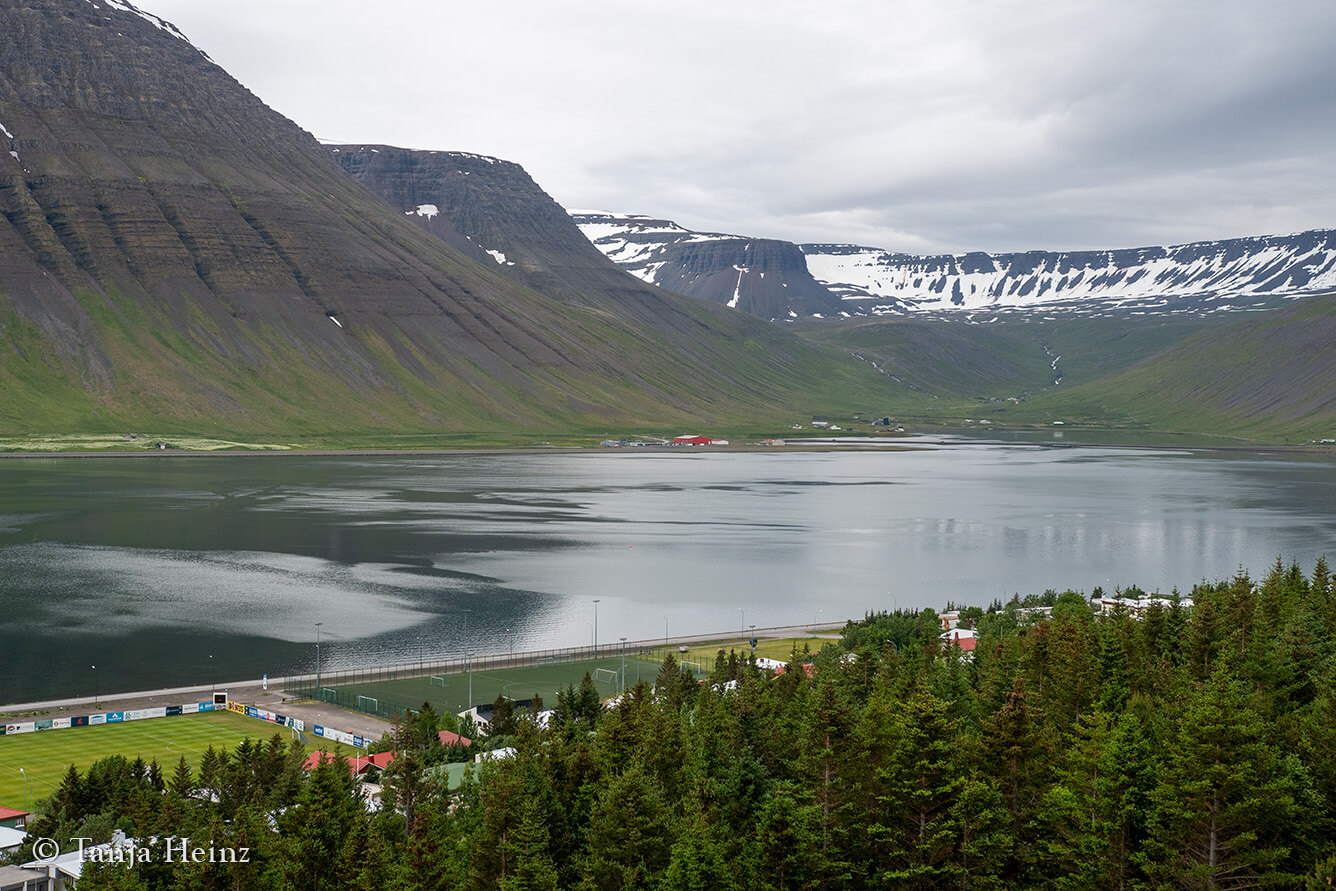
Well... no.
All these people did not arrive by plane. I think that would not have been possible.
Although Ísafjörður is so small, on one day, the town was full with people walking through the few streets.
But the reason for all those people in the streets was because of the arrival of several cruise ships.
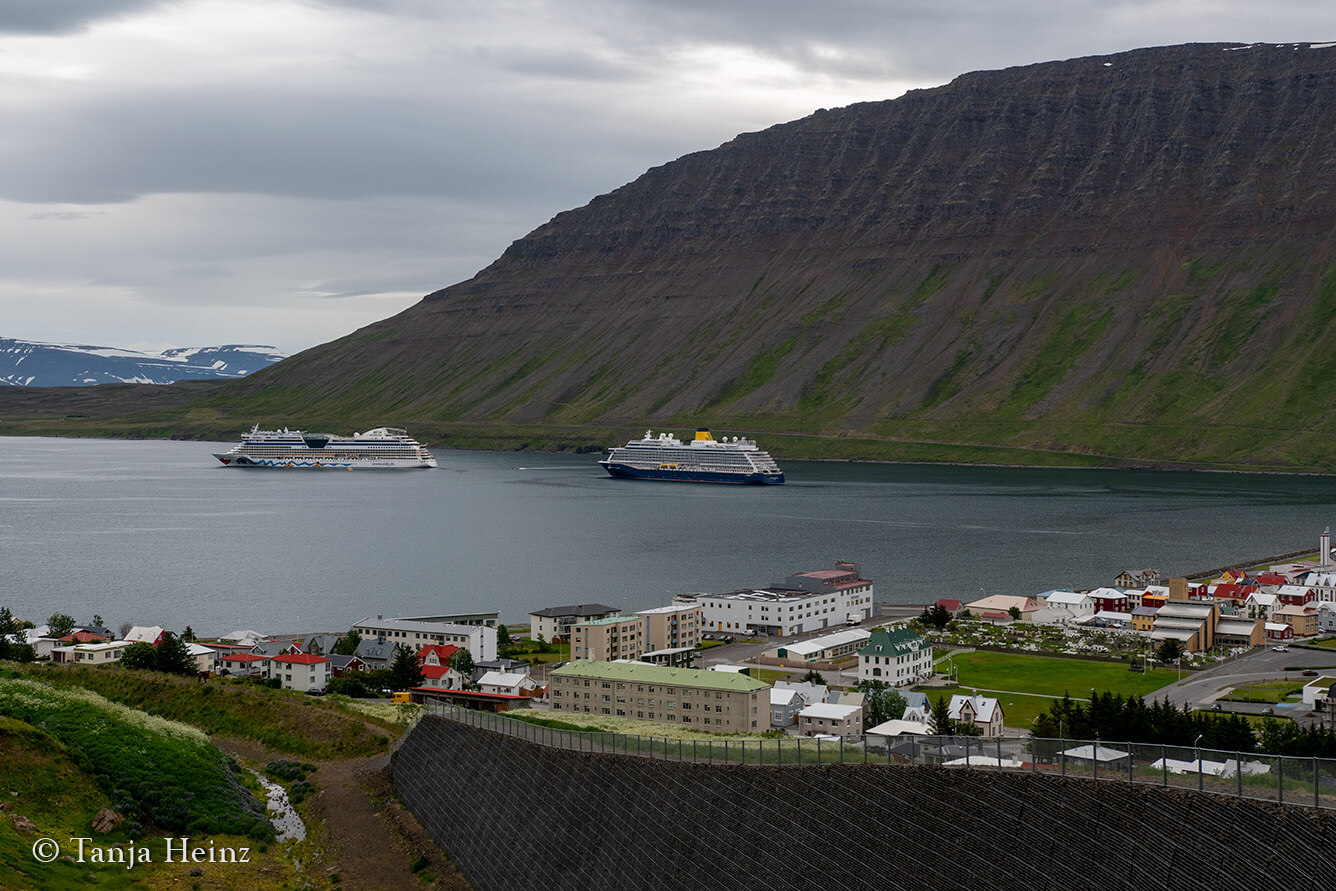
Information: There are regular flights between Ísafjörður and Reykjavík. There is also a shuttle bus in Ísafjörður connecting the centre of the town and the airport. The shuttle bus only runs when an airplane arrives and departs.
It was indeed quite surprising that so many people would visit such a small and isolated town in the north of Iceland.
The arrival of all those people on that day also let to an increased number of smaller boats around the large ship cruises...
... and some of them also went to Vigur Island.
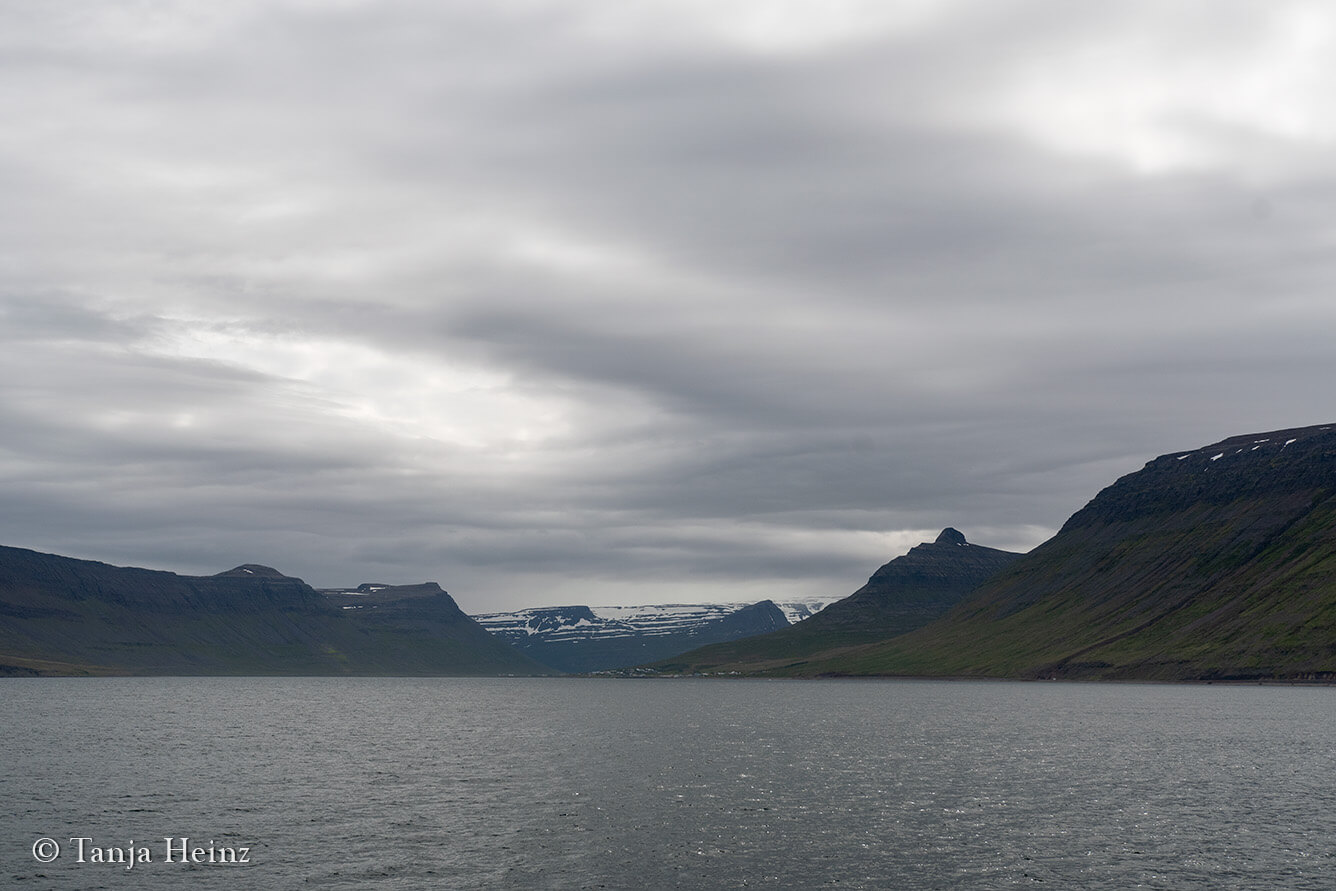
Vigur Island
Bird hunting. Whaling. Or fishing. Honestly, I was not sure in the first moment if I should visit Vigur Island. I had seen nice photographs of the island. Read beautiful words about the people on Vigur Island. And was interested to see some puffins again. However, should I visit a place where Eider down harvest is a common practice? Meaning, another traditional practice that could possibly involve wildlife exploitation?
I was not sure.
But I went to Vigur Island.
And everything was okay for me.
I participated in a tour in Ísafjörður. The tour was conducted by West Tours. And the meeting point was at the harbour.
The boat left the harbour around 3 p.m. It was a nice ride and we got beautiful views on to the surroundings.
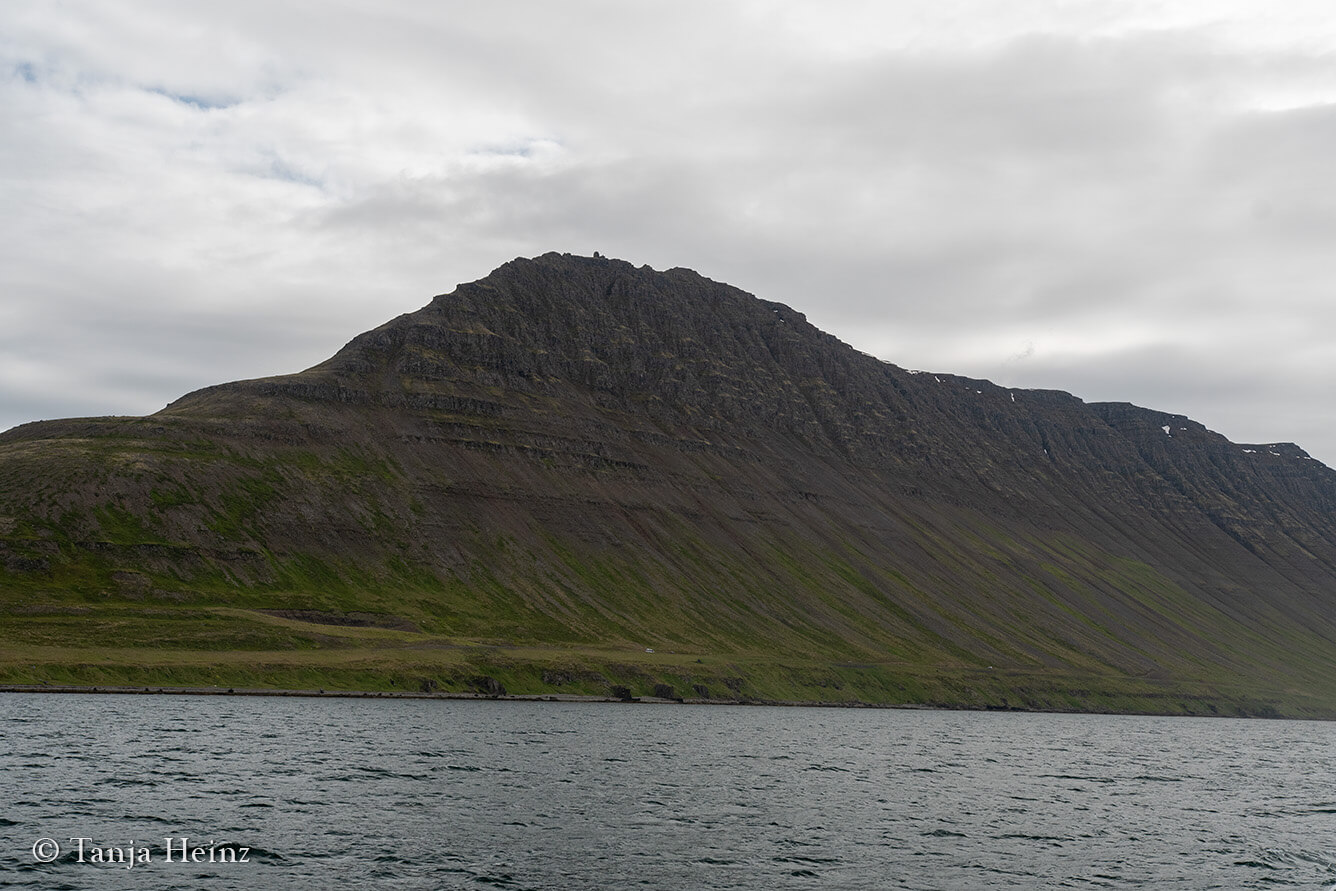
From afar we saw some cars on the road. The road I planned to ride by bike on the next day to the Arctic Fox Centre in Súðavík.
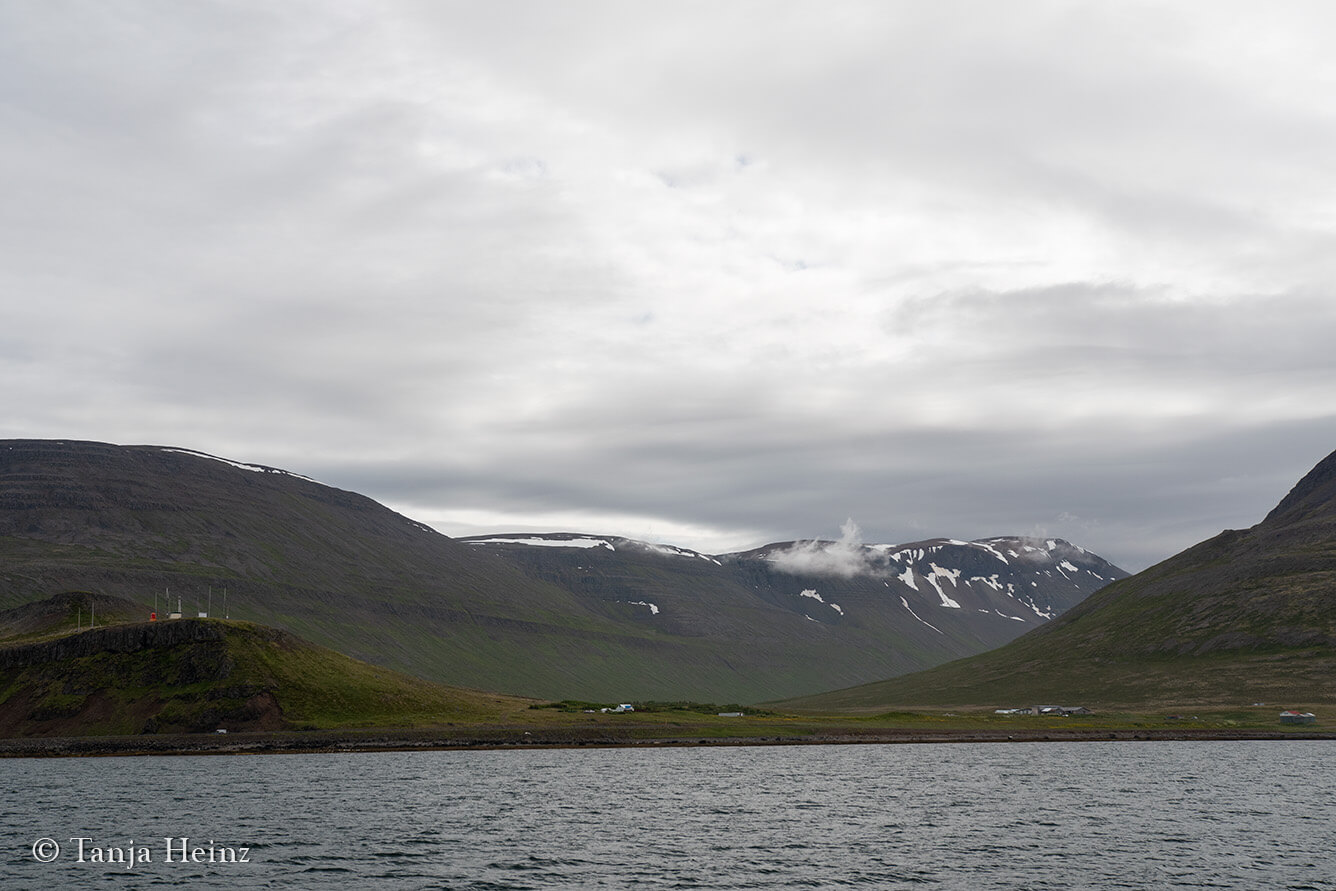
The air was chilly, but warm blankets kept us warm. Unfortunately, I was sitting at the edge of a bench, and thus, could not listen to everything that came out of the loudspeaker.
Therefore, I got not much information about the area of Ísafjörður and the wildlife on Vigur Island.
But I was astonished by the impressive surrounding landscapes.
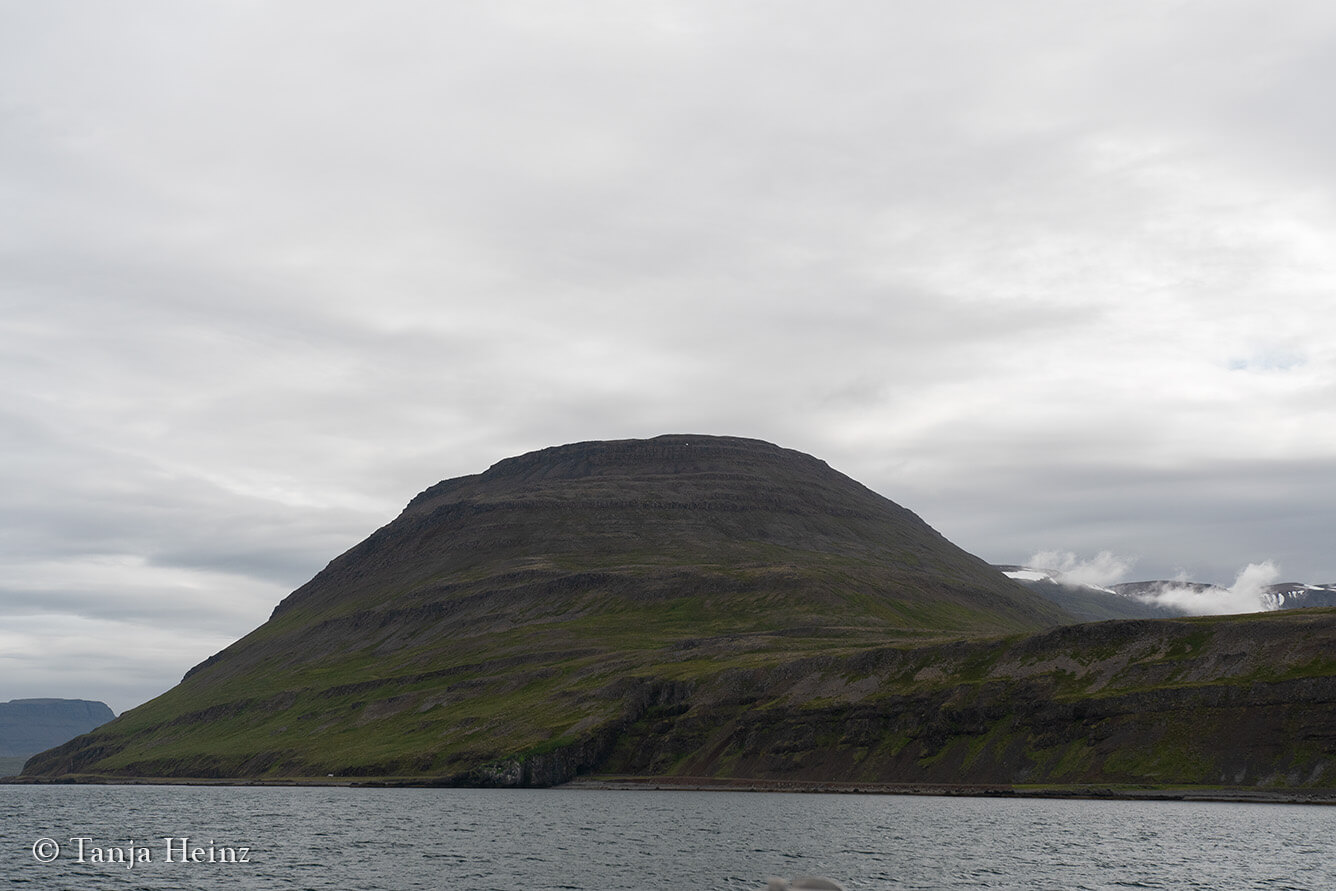
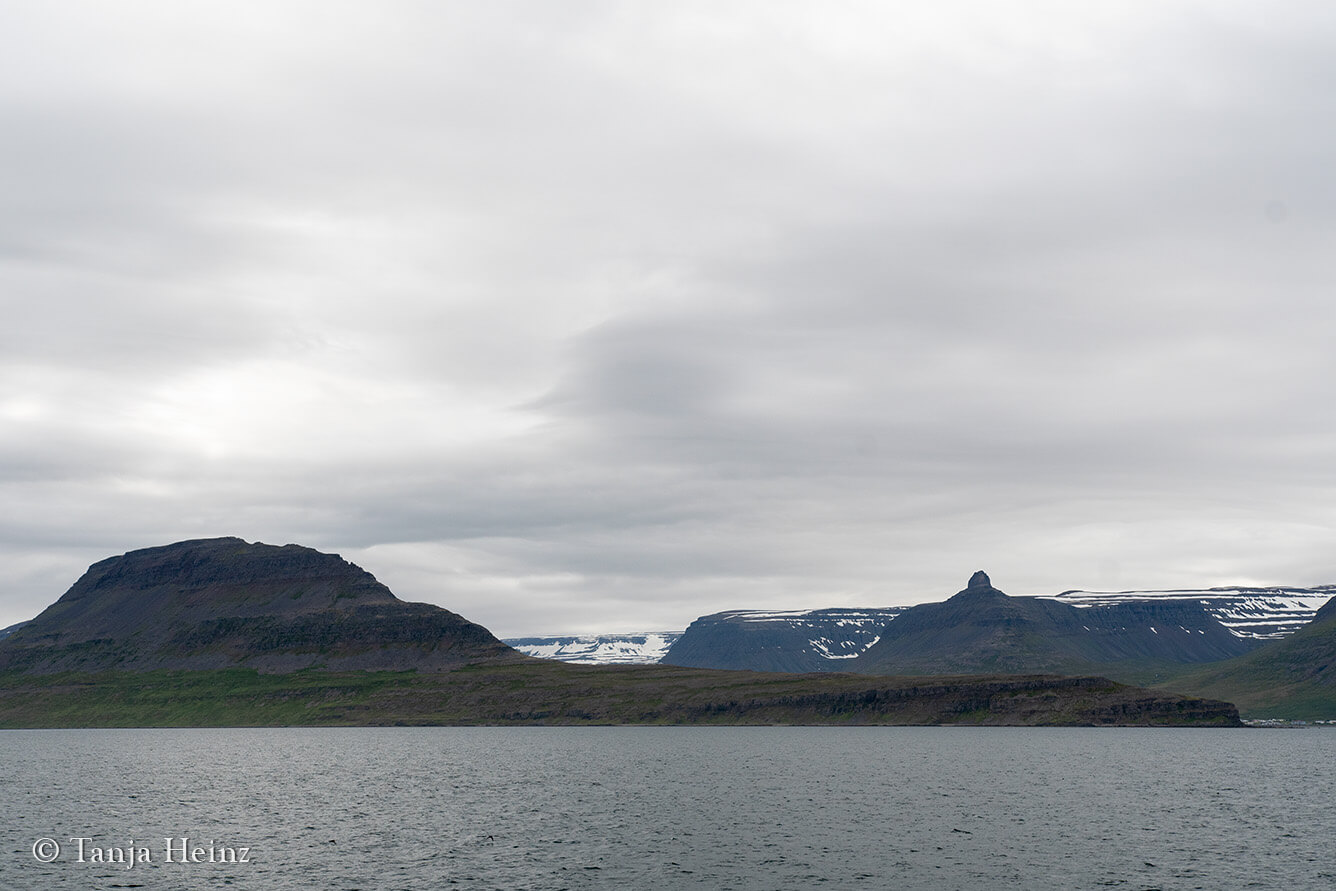
And finally, after an about 45 minutes trip, we arrived on Vigur Island.
Our tour guide was already waiting for us. Because of the cruise ships, one boat after the other was arriving at the island.
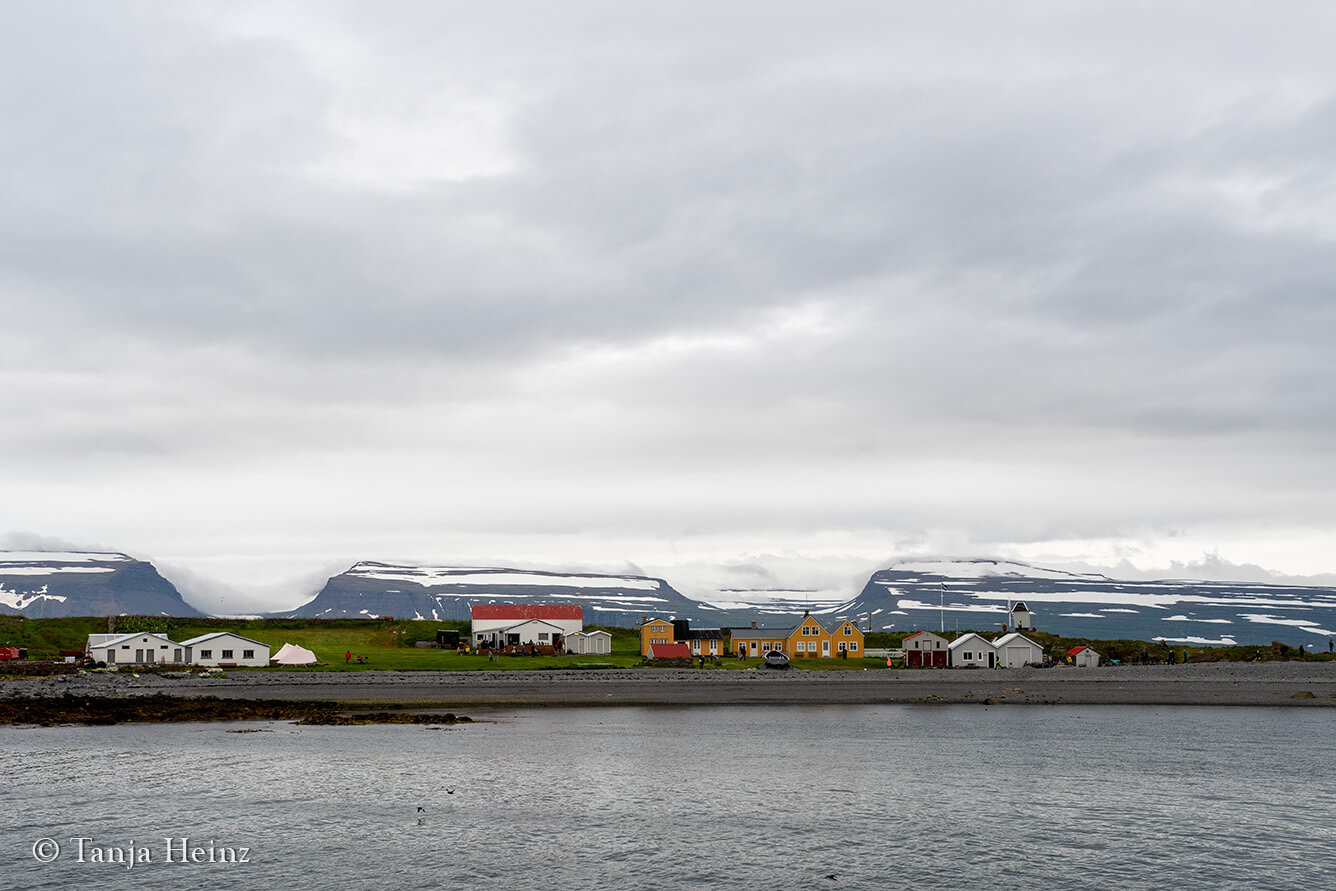
While we were arriving at Vigur Island, another boat was just leaving.
Although they were welcoming so many people on that day, it did not feel crowded.
The first wildlife seemed to wait already for us. Some harbour seals were lying seemingly comfortably on some stones around Vigur Island.
How many were there?
Honestly, it was not that easy to count the harbour seals as they were very well camouflaged.
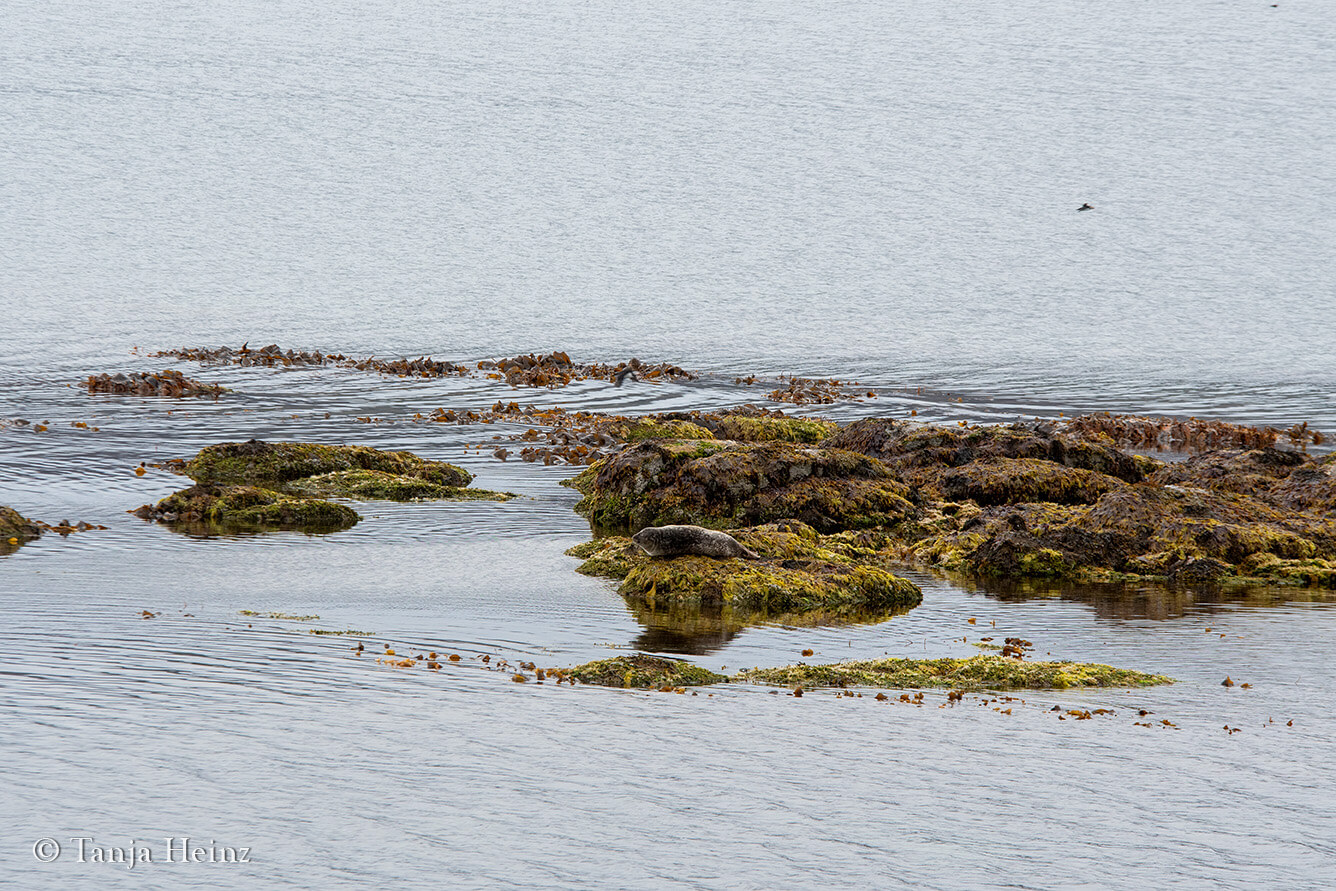
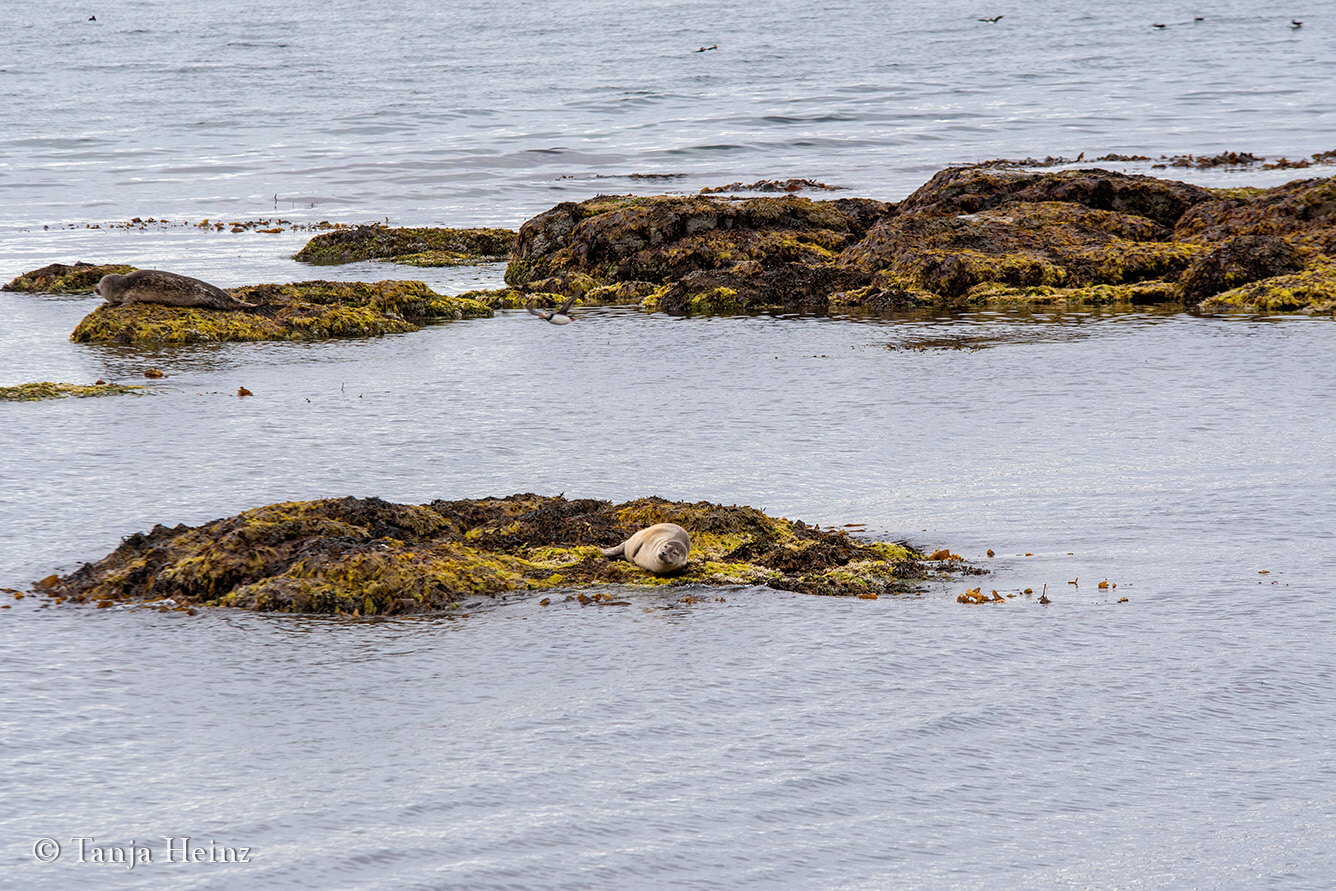
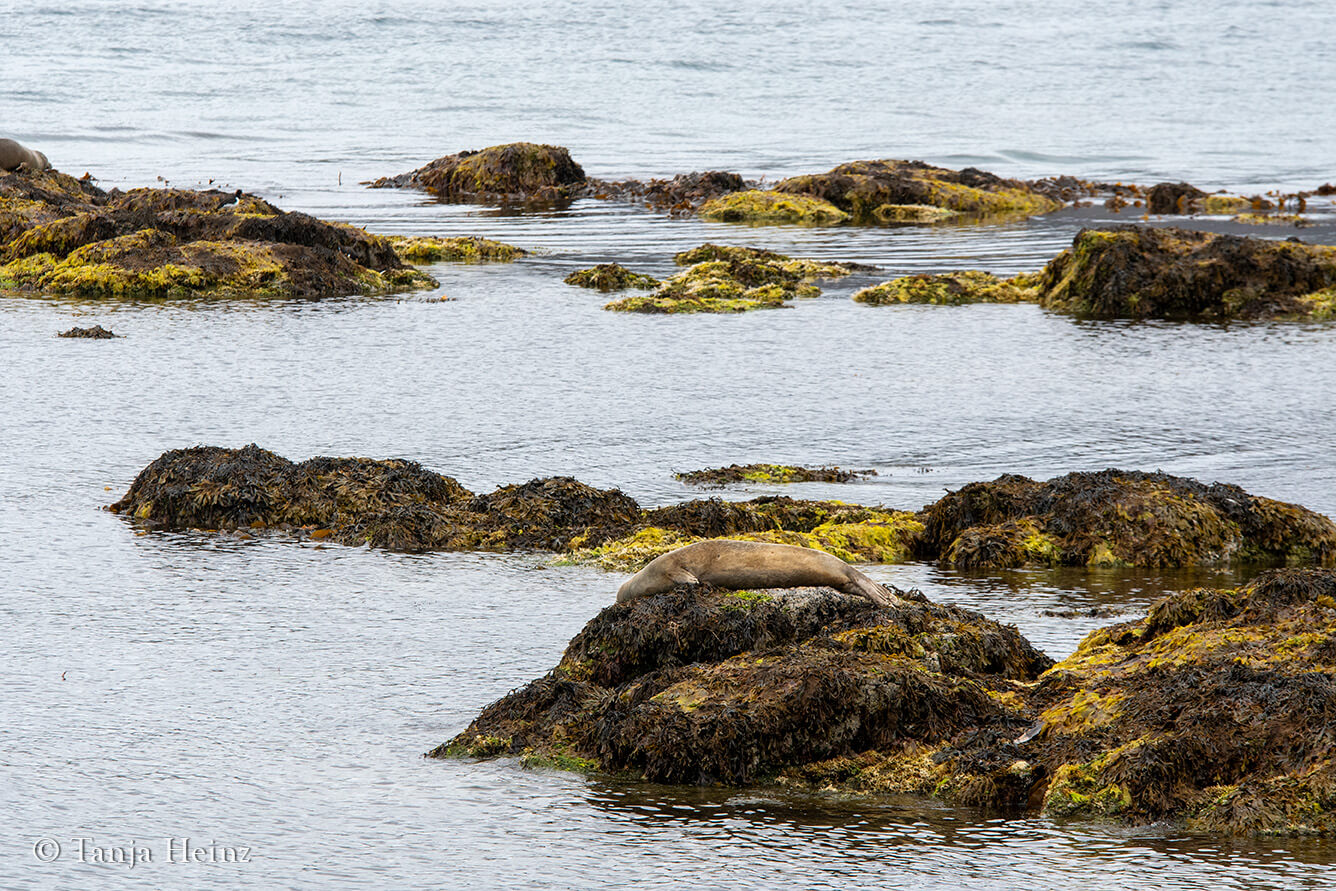
Information: Do you want to know another place where you can observe harbour seals? Heligoland is a great place to not only observe harbour seals, but also grey seals. In spring and summer, it is furthermore a great place for bird watching.
Our guide on Vigur Island was a self-proclaimed naturalist. She was sympathetic and I was curious what she would tell us about the dawn harvest.
As she described herself as a naturalist and studied bird populations on Vigur Island, maybe dawn harvest is not as cruel as I thought in the beginning.
Before we entered the place where the dawn is processed, we met already the first common eiders.
That means, just females and their chicks.
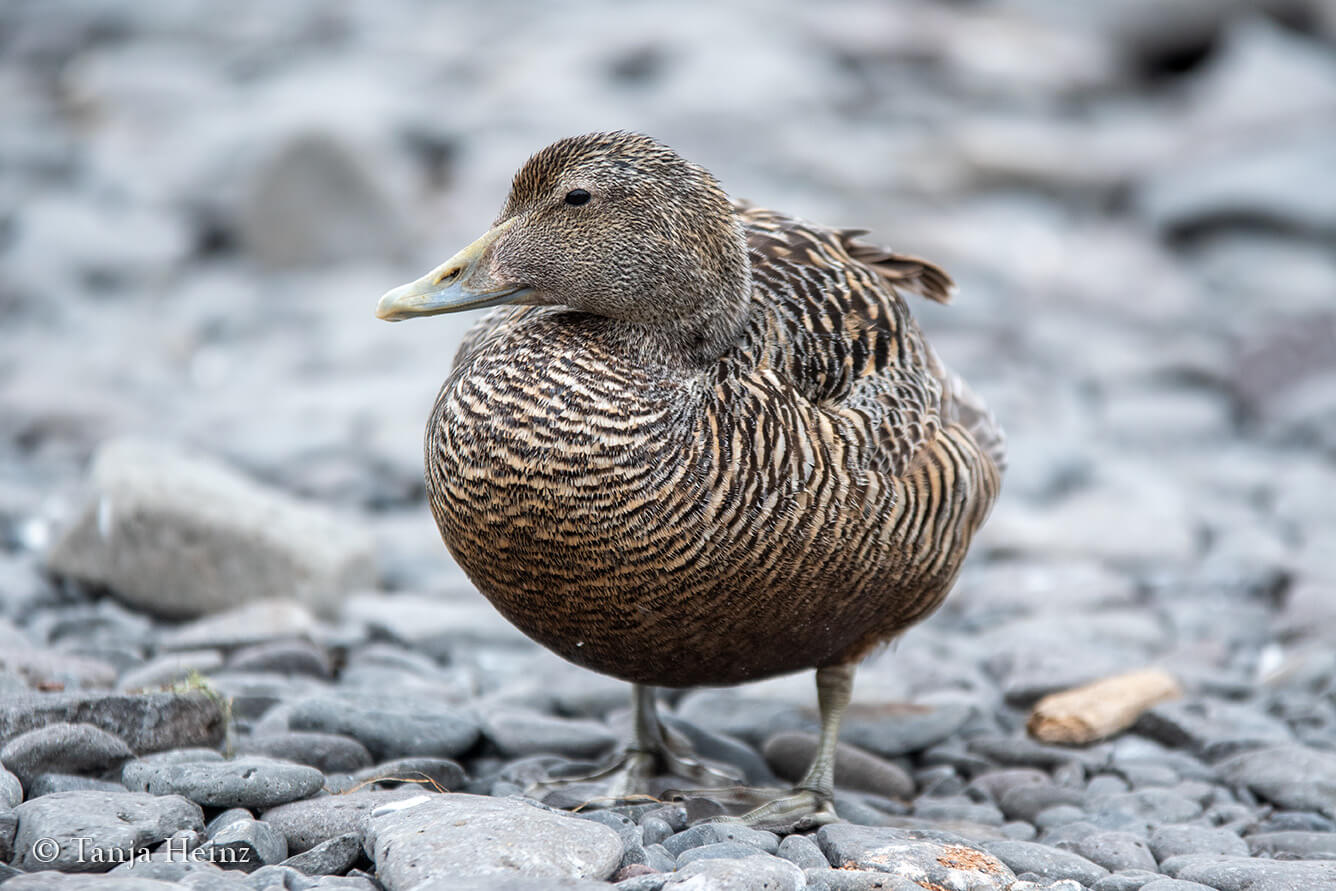
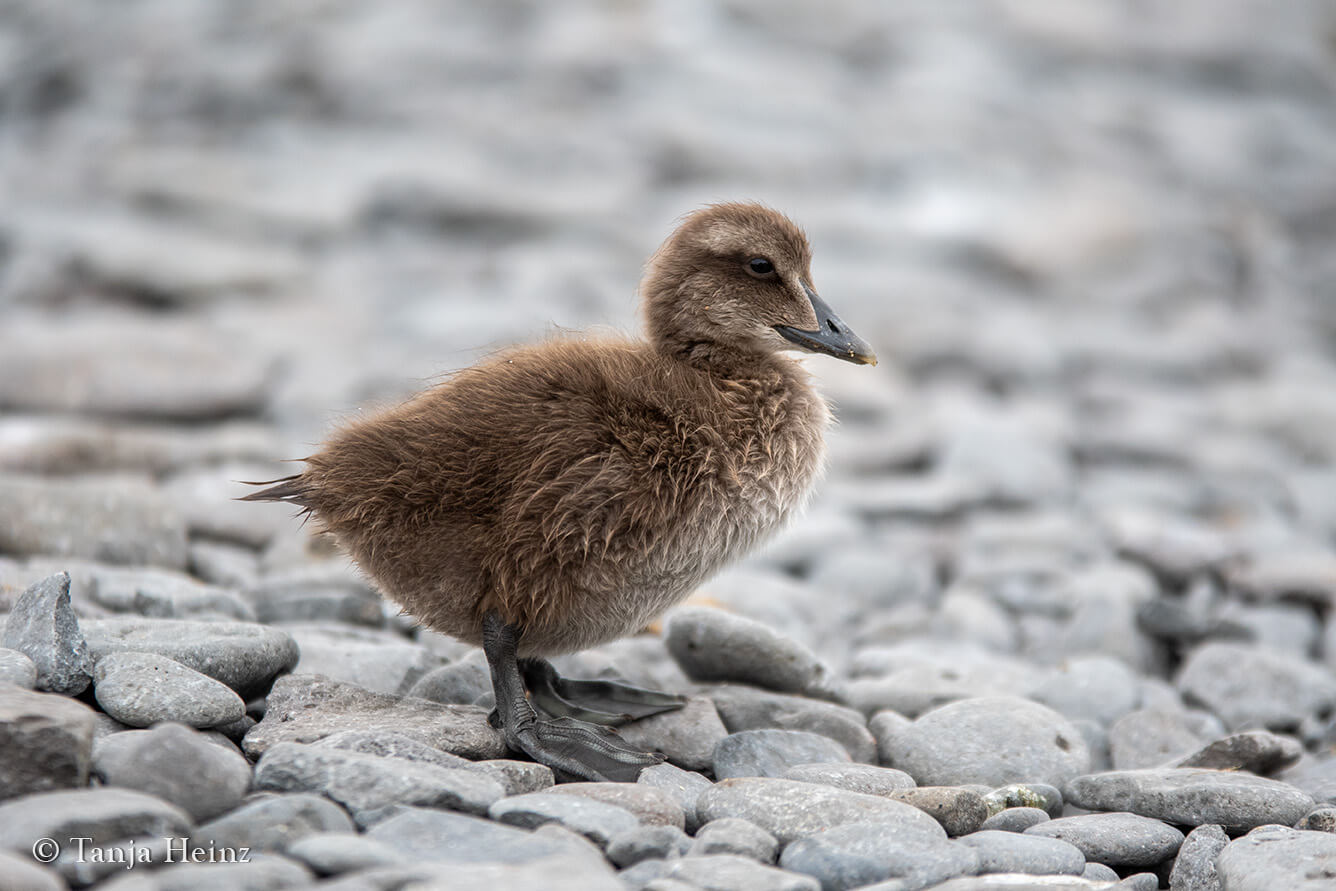
Common eiders use the soft and highly insulating down from their body as a nest material. And this down is harvested from the nest of these birds.
Typically, females lay four to six eggs during the breeding season around April and May. Females only leave their nests for a short period of time during incubation, for example, in order to drink. When a female leaves its nest, she covers the eggs with the down which she plucks from the breast. The down is important to keep the eggs warm and hide the nest from predators.
After people harvest the down from the nest, dry grass or hay is placed over the eggs in order to prevent predators finding the unattended nest.
Then the down can be processed. The down must be dried, removed from grass, seaweed, and other material, and cleaned.
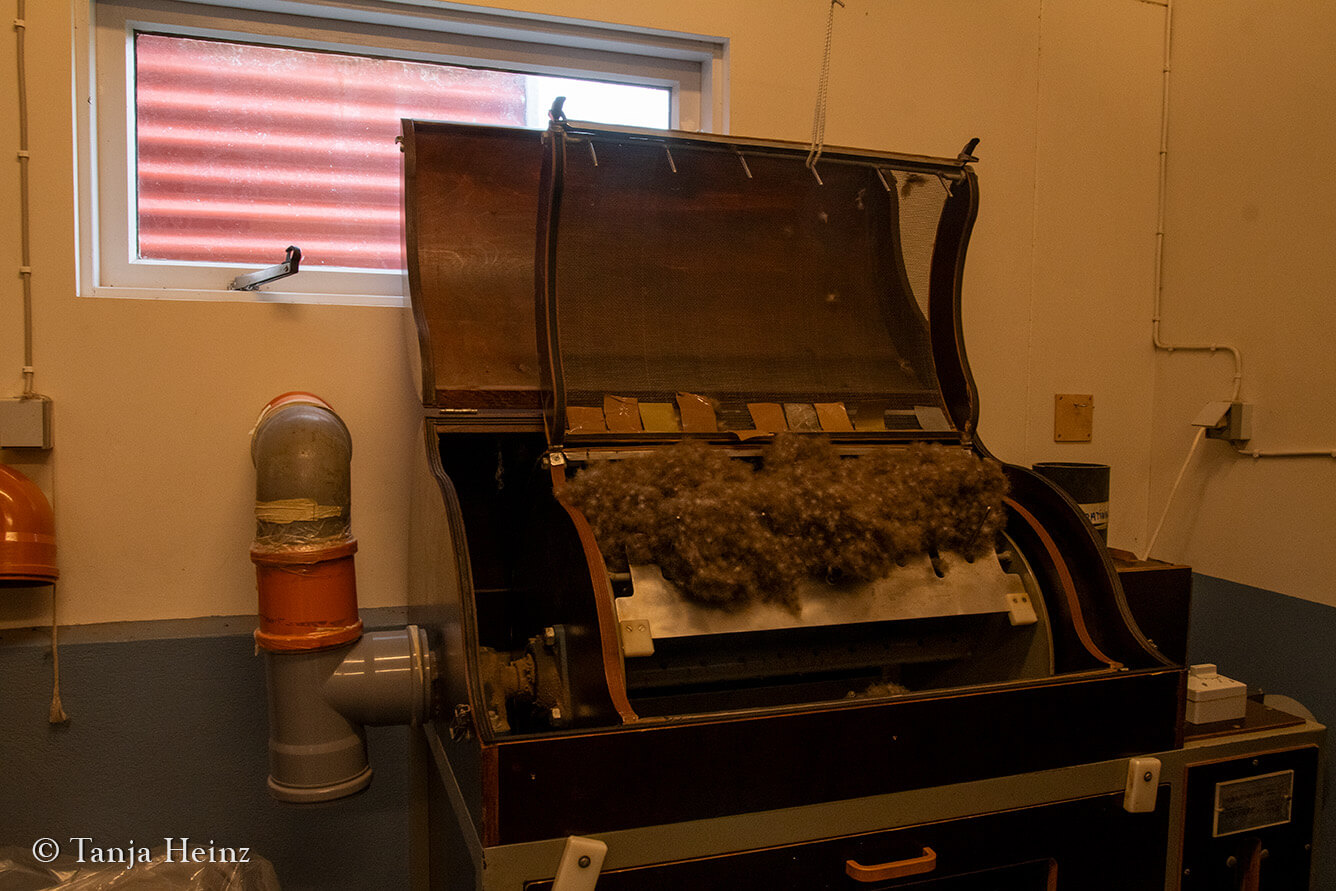
Information: Down is a highly-praised merchandise, and thus, very expensive. It is an income source for the farmers and traded on Asian and European markets. It is typically used for duvets, pillows, or coats. What do you think about this? Would you buy a product with eider duck down? Please let me know your opinion in the comments.
At the end, it did not look cruel, and furthermore, our guide told us that the hay would be better for the eggs than the down. Especially when its wet, as the water can better run off.
When we left the house where we looked at the processing machines, I was looking for more wildlife on Vigur Island. We could observe quite many birds.
I walked around a little bit and spotted a black guillemot nesting on eggs under a boat. Close-by was another black guillemot, maybe observing all the new visitors?
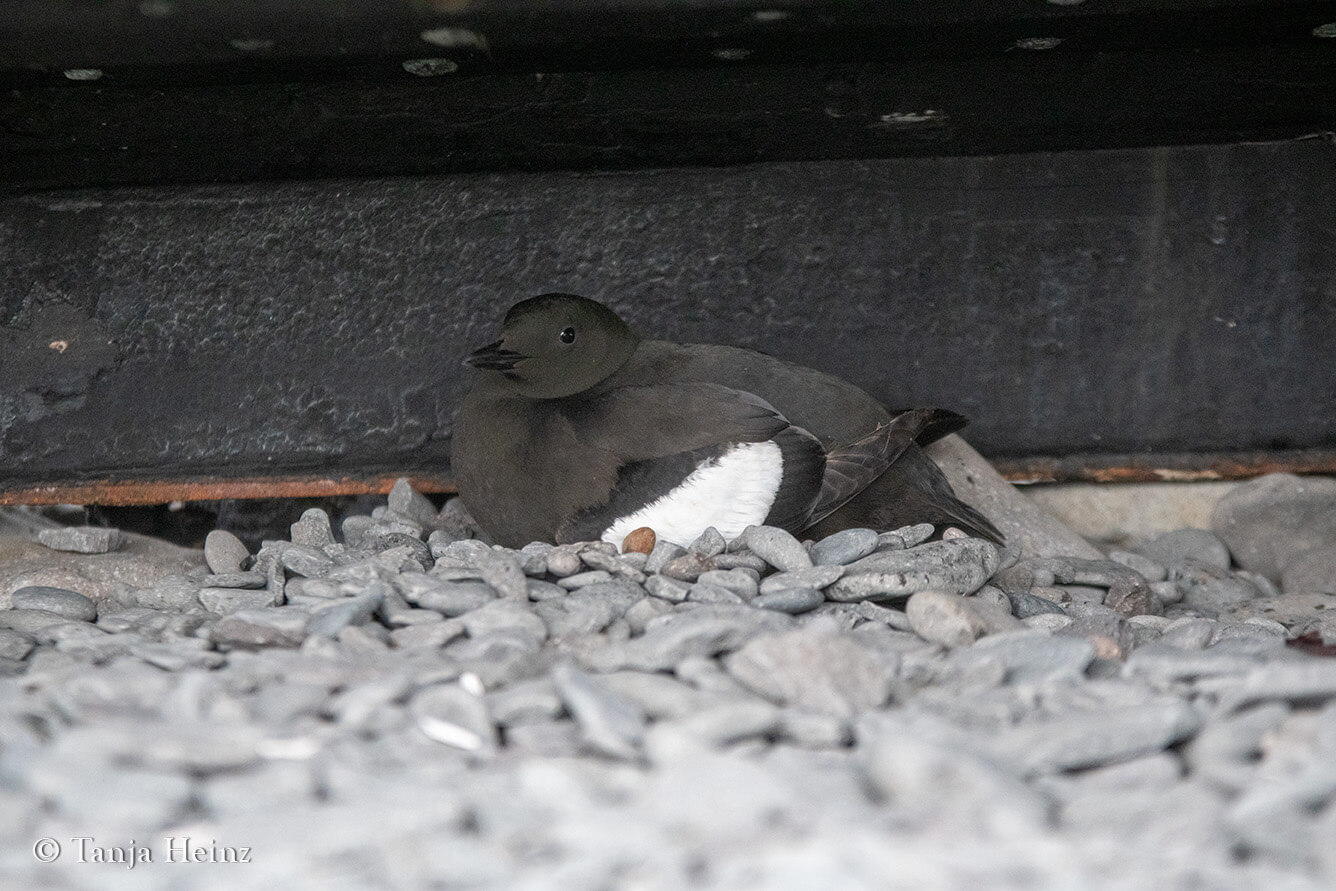

There were also some puffins around.
I saw a group of them resting on a large stone.
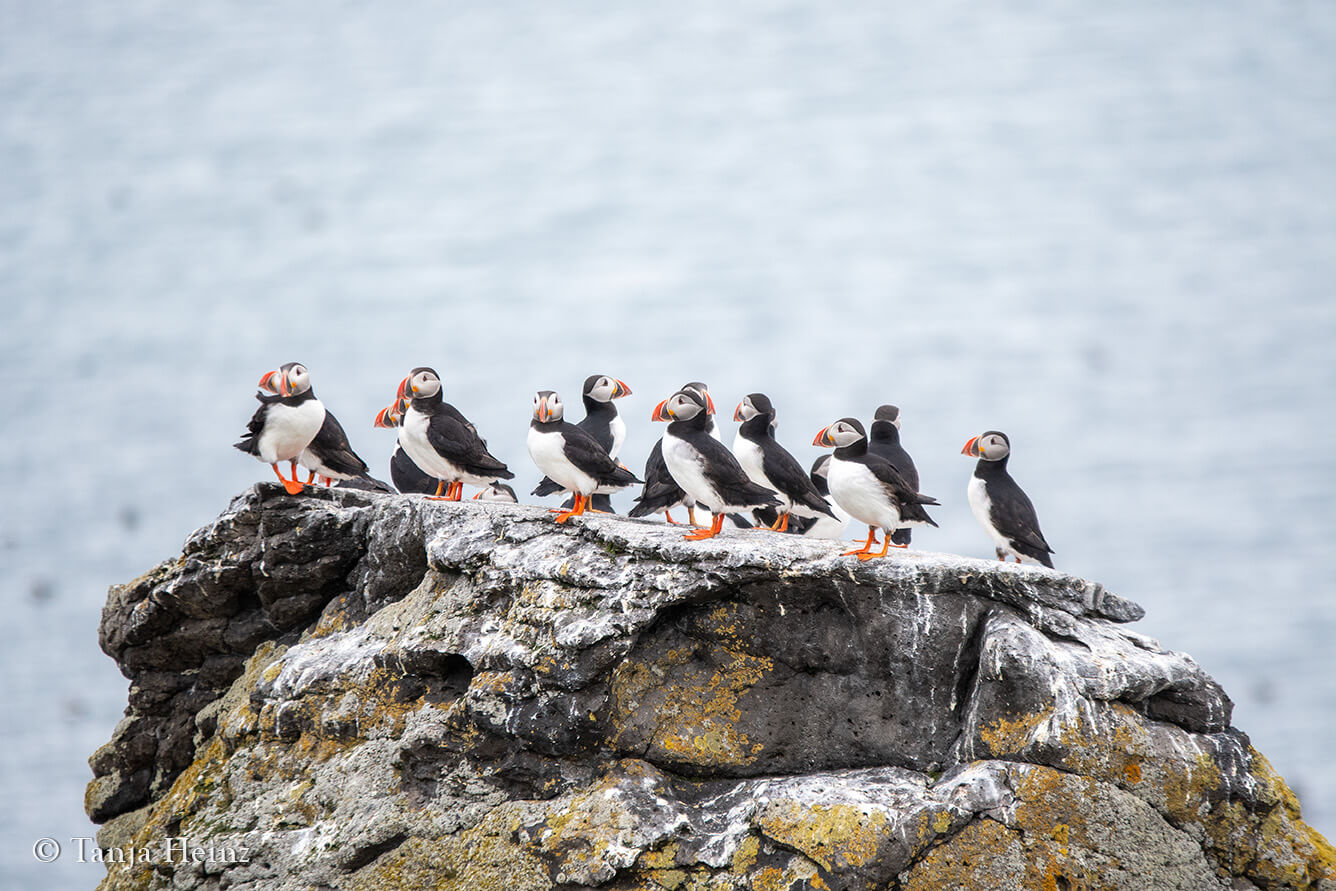
We finally gathered as a group again and headed to the other side of Vigur Island. We were equipped with a wooden stake.
I already knew why we got these wooden stakes into our hands.
It was because of the very protective Arctic terns. There were quite many of them around us.
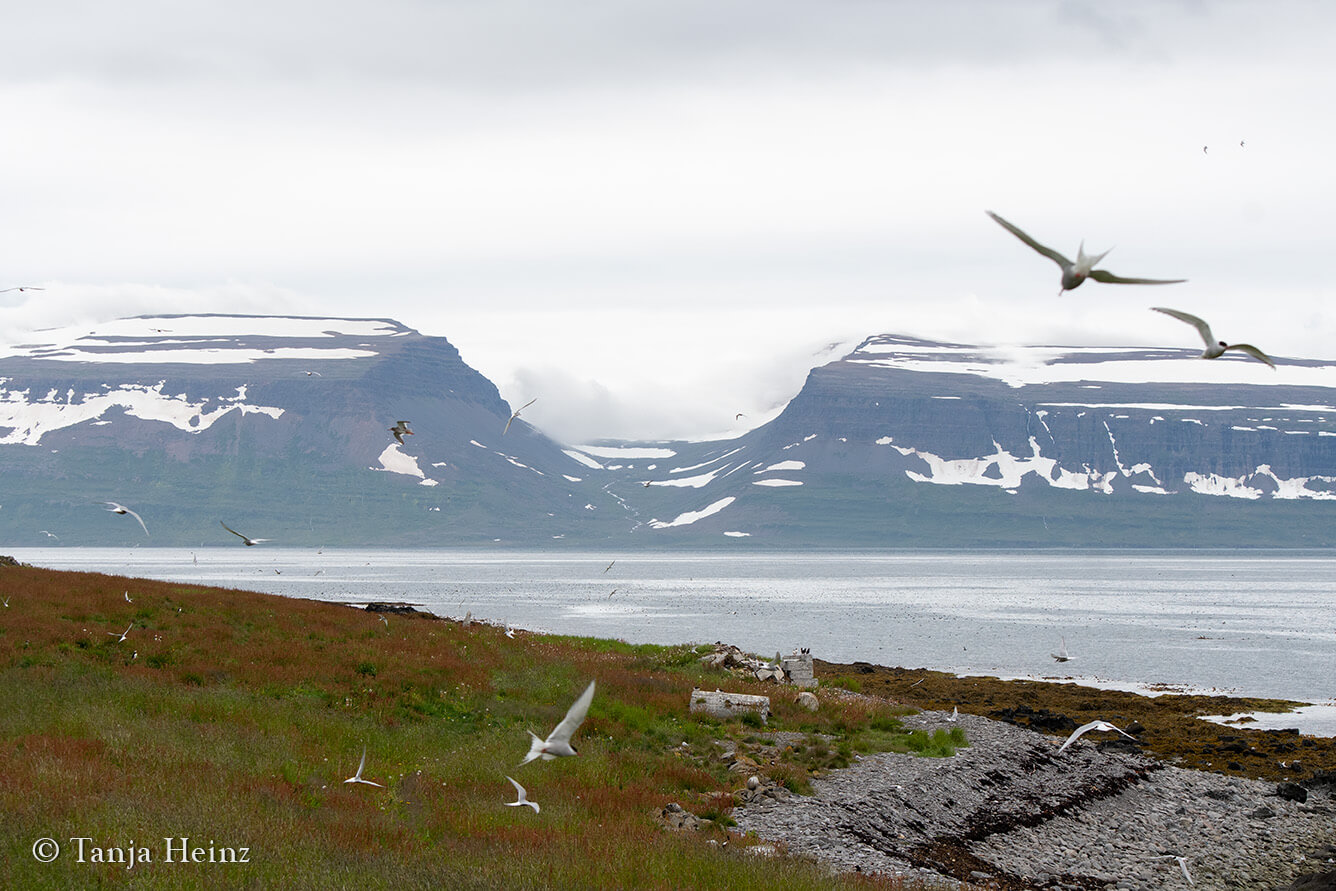
Information: Another good place to see Arctic terns is Grímsey - a small island off the north coast of Iceland between Akureyri and Húsavík. On Grímsey I could already observe the very protective behavior of Arctic terns. Please visit my previous blog entry to read more about my experiences with Arctic terns on Grímsey.
As Arctic terns always attack the highest point of a person – it would typically be the head – people must hold the wooden stake above the head up into the air. At the other side of the island, the Arctic terns became quite aggressive.
As they became so aggressive, I already guessed to see an Arctic tern chick on our walk.
And it was indeed the case.
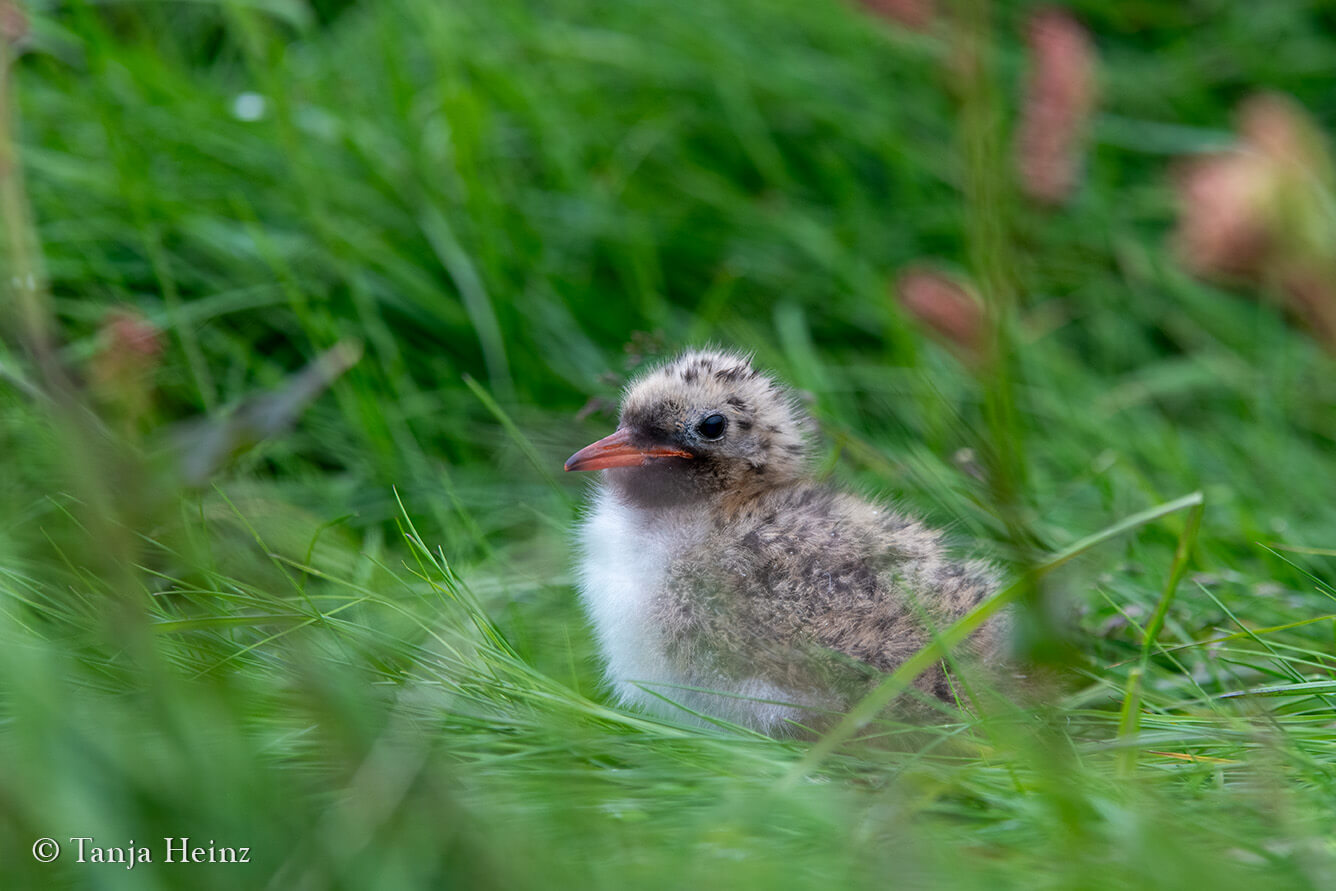
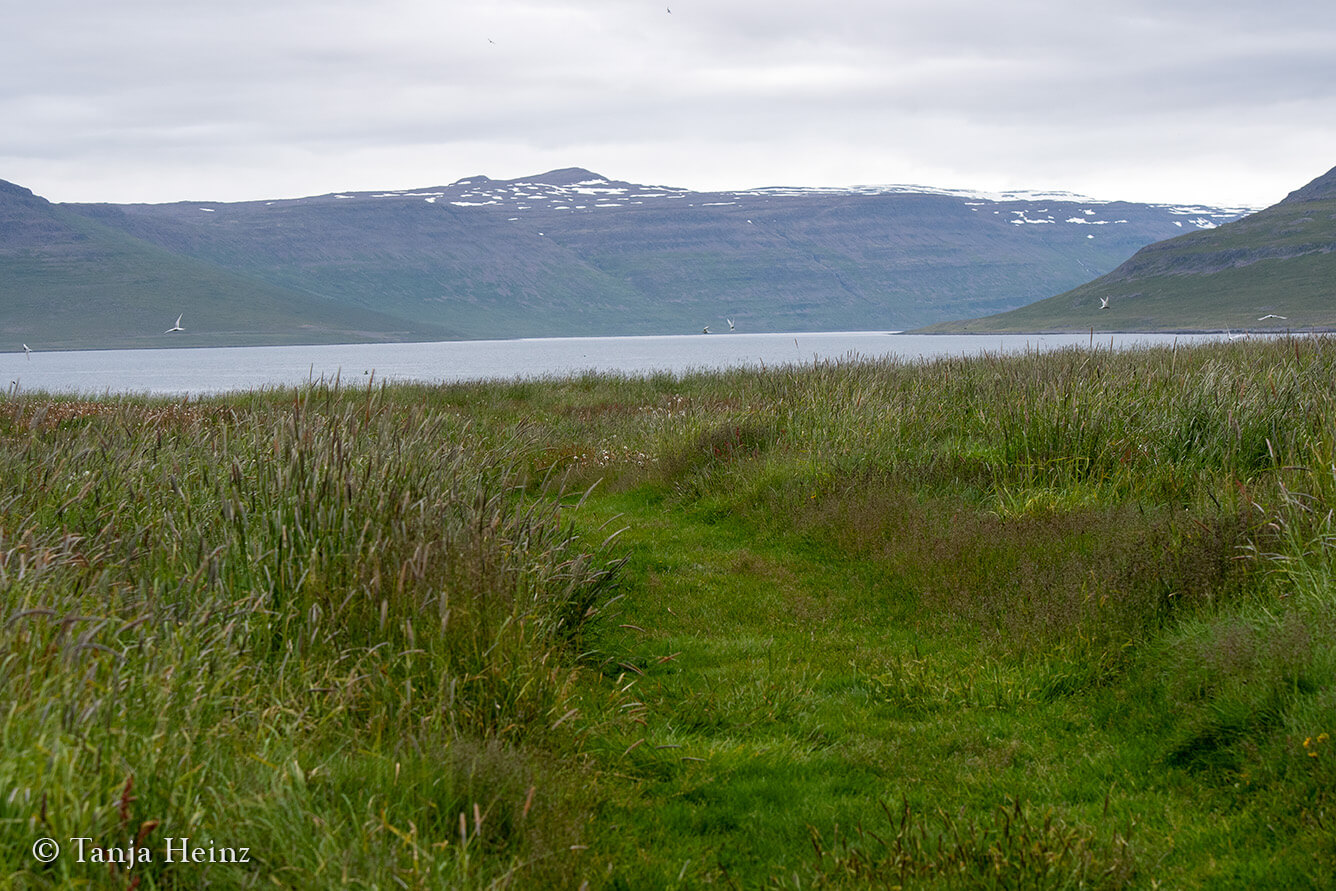
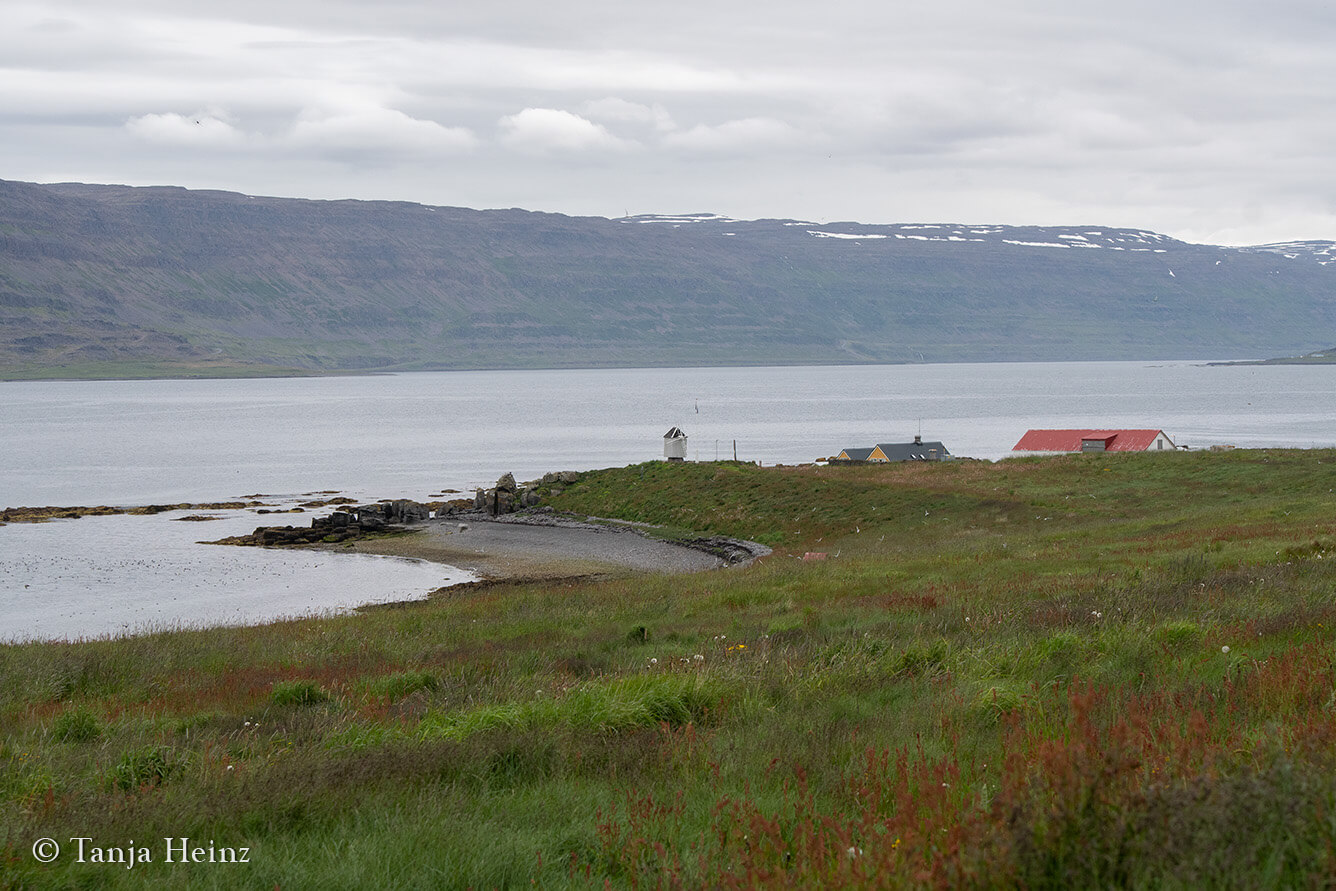
We did not stay at that place for a long time. We just stopped for a moment to listen to our guide and left quickly again. Of course, we did not want to further disturb these birds.
When we arrived again at the other side of Vigur Island, we spotted more puffins.
There were quite many of them around.
Either resting on stones or anywhere else. Or they were flying. Some with fish in their beaks.
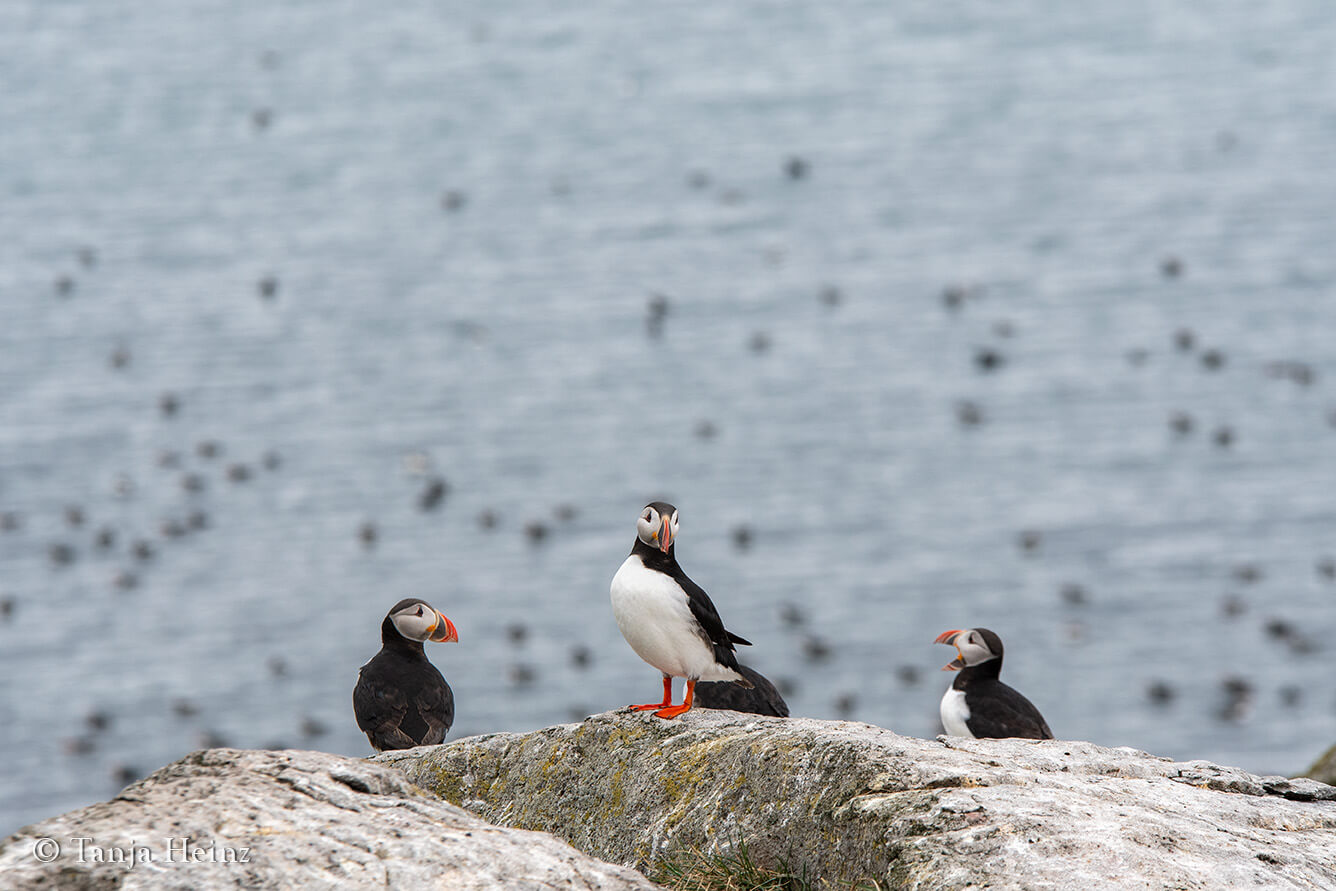
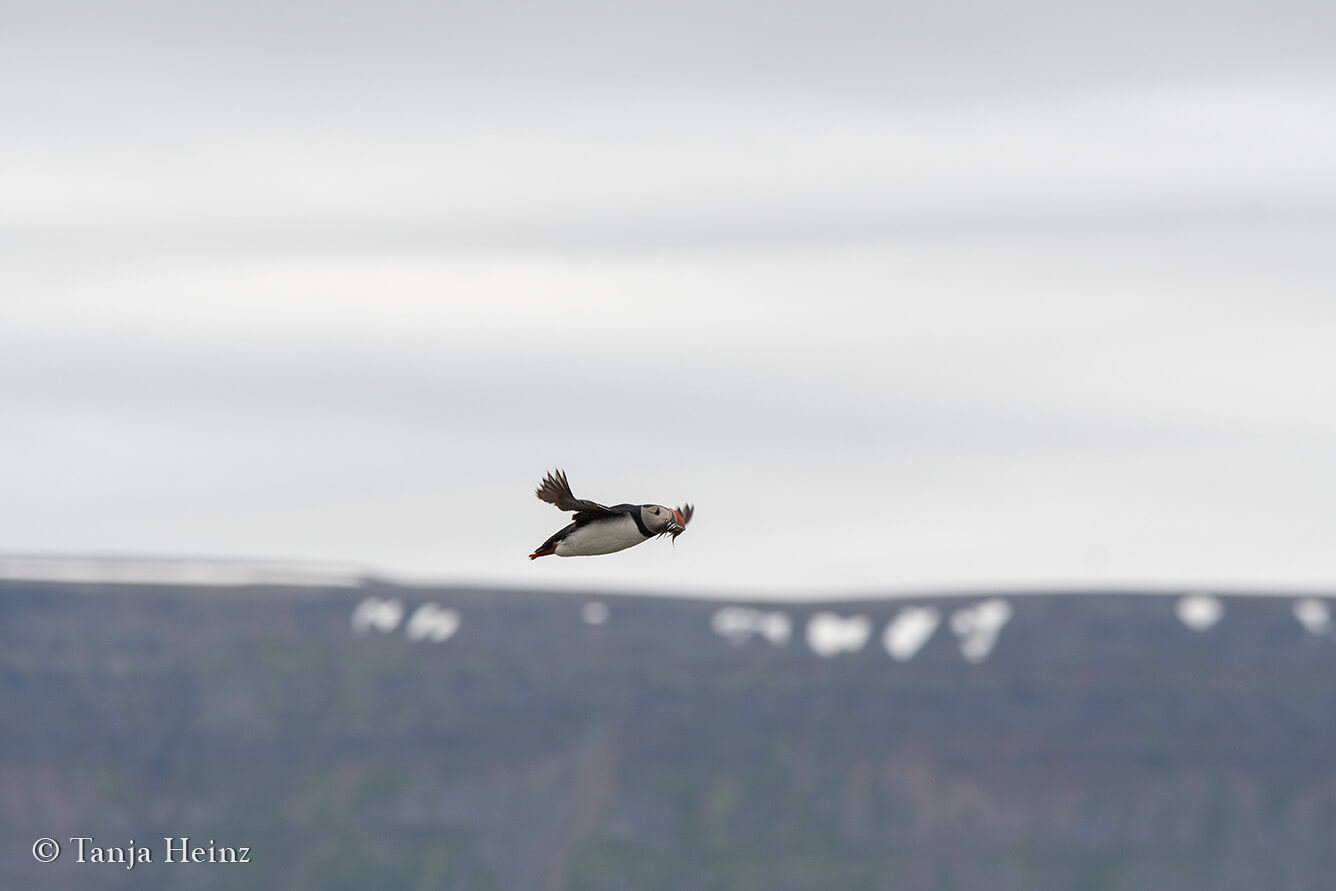
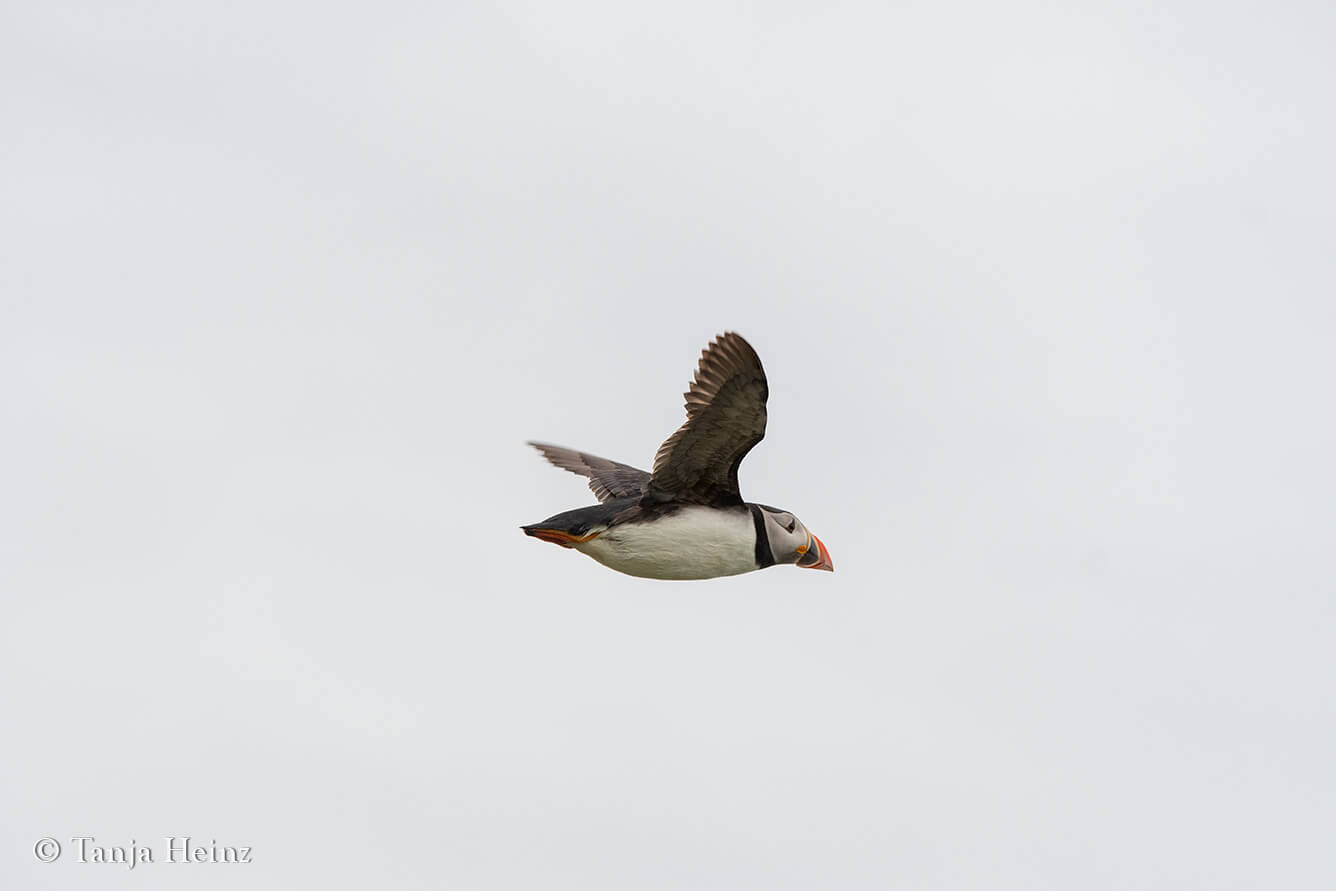
The puffins were the stars among all the birds flying around and probably of all wildlife on Vigur Island.
We stopped for a moment, but one part of the group – including the guide – moved forward again. I stayed a little bit with the puffins. Although I enjoyed the tour, in that moment, it was too fast.
There was just too much to observe.
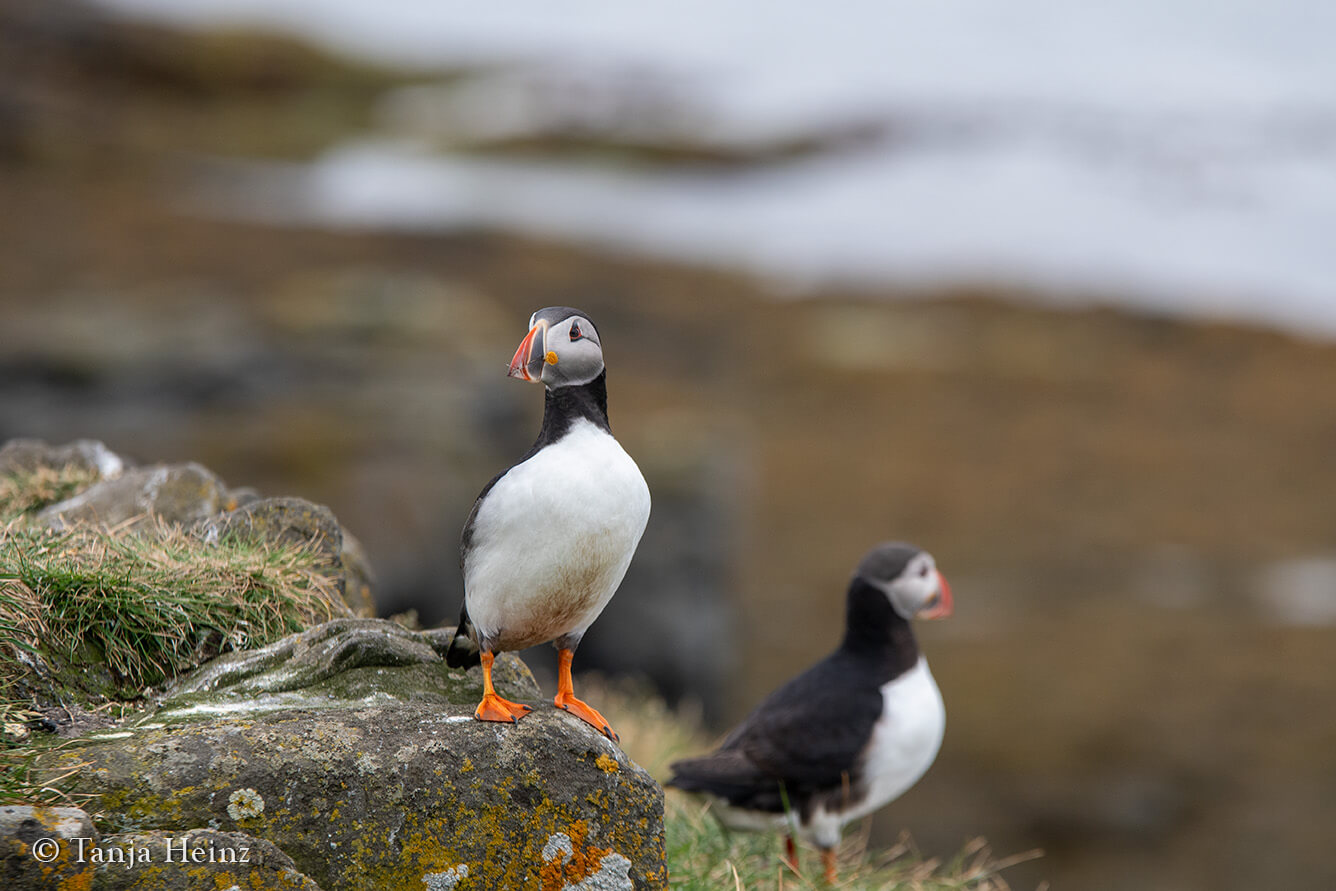
And the puffins were so photogenic.
Some were even seemingly posing for the camera.
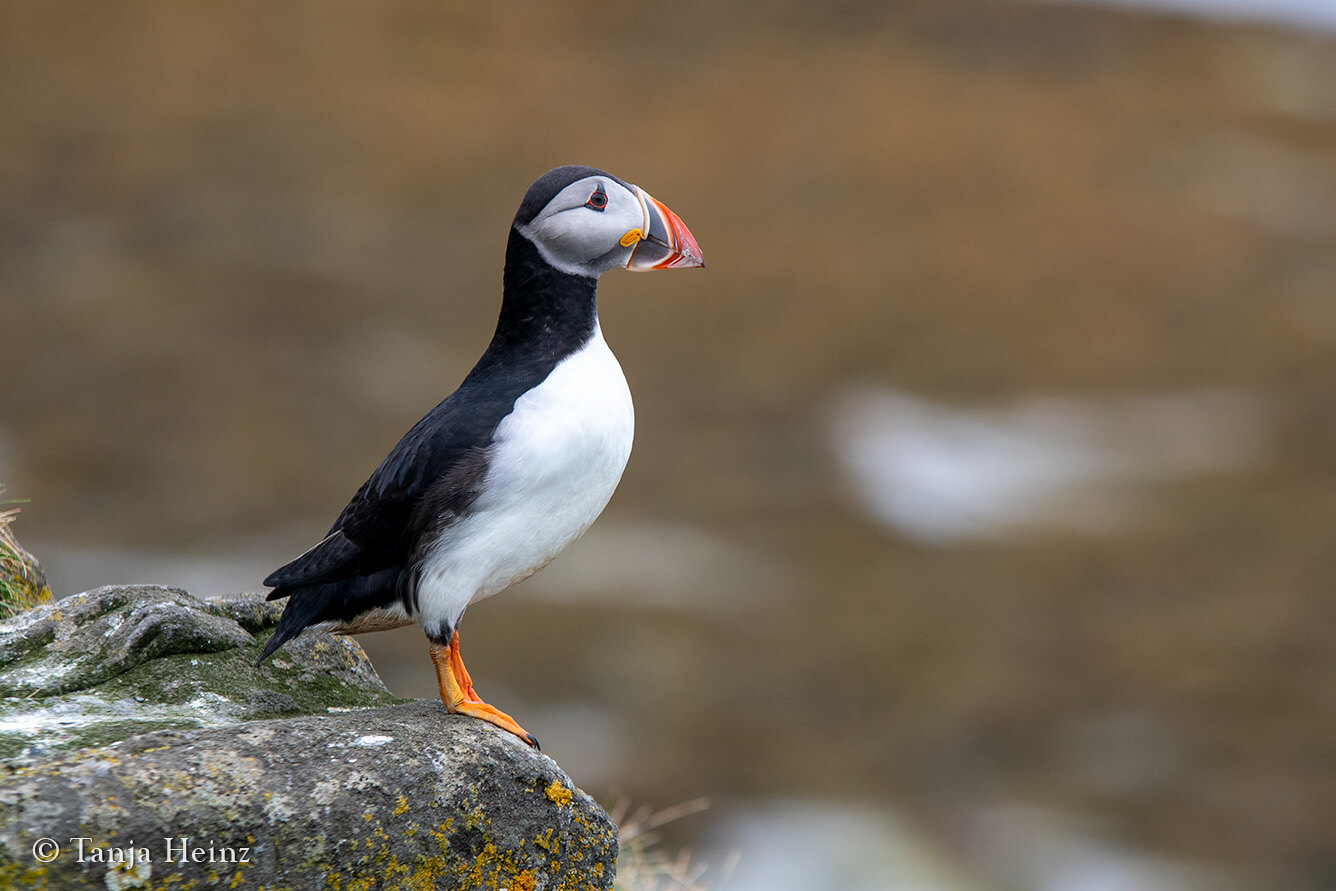
While puffins were quite popular among visitors and Arctic terns probably not, other birds were rather inconspicuous.
Like, for example, the lesser black-backed gulls.
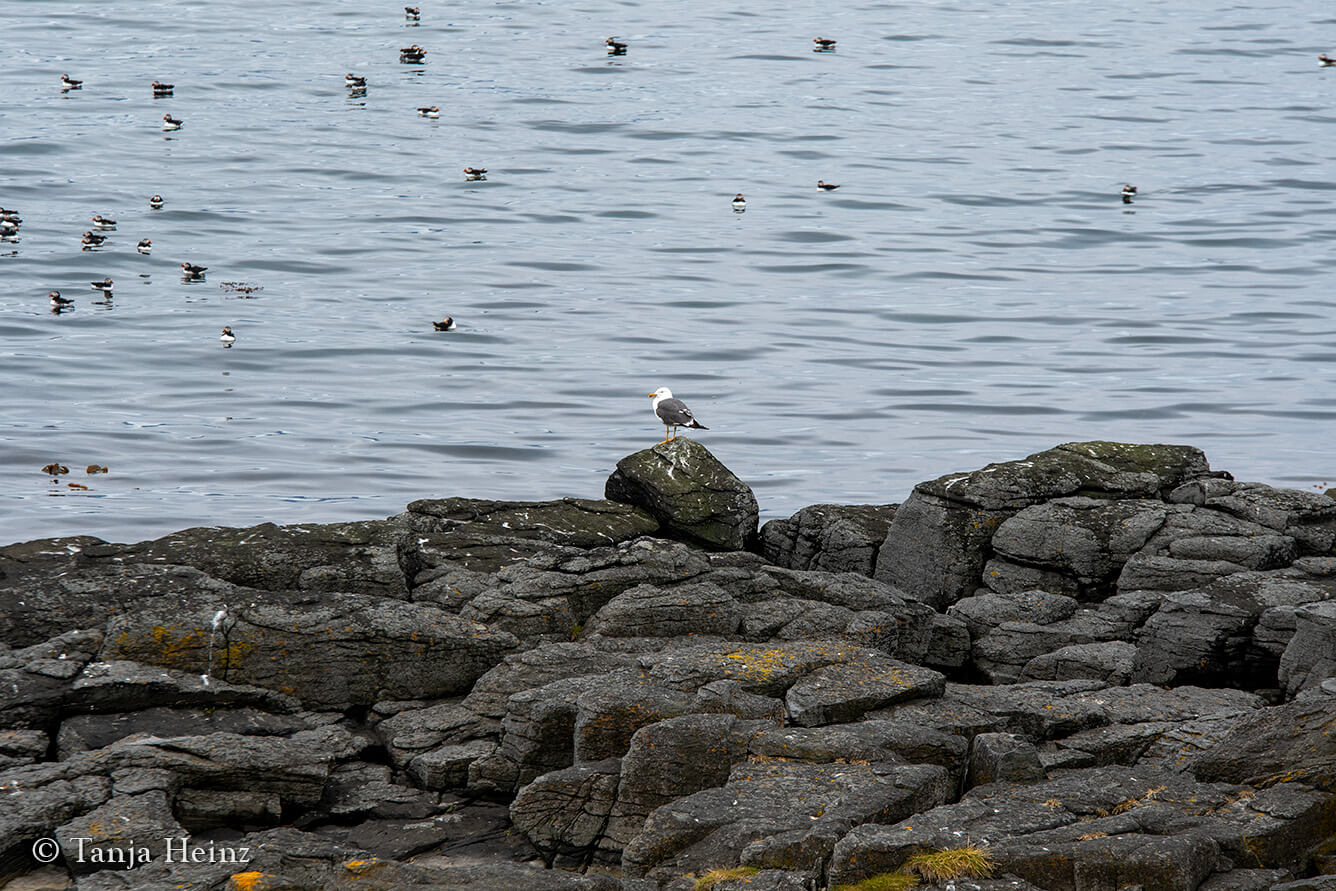
Maybe Arctic terns are not that popular among visitors, but I think that they are quite impressive birds.
For example, did you know that they have the longest migration routes in the animal kingdom? And that they skip the winter months as they move from the Northern to the Southern hemisphere every year?
As much annoying they might appear, Arctic terns are indeed very impressive birds and they are right being protective of their chicks.
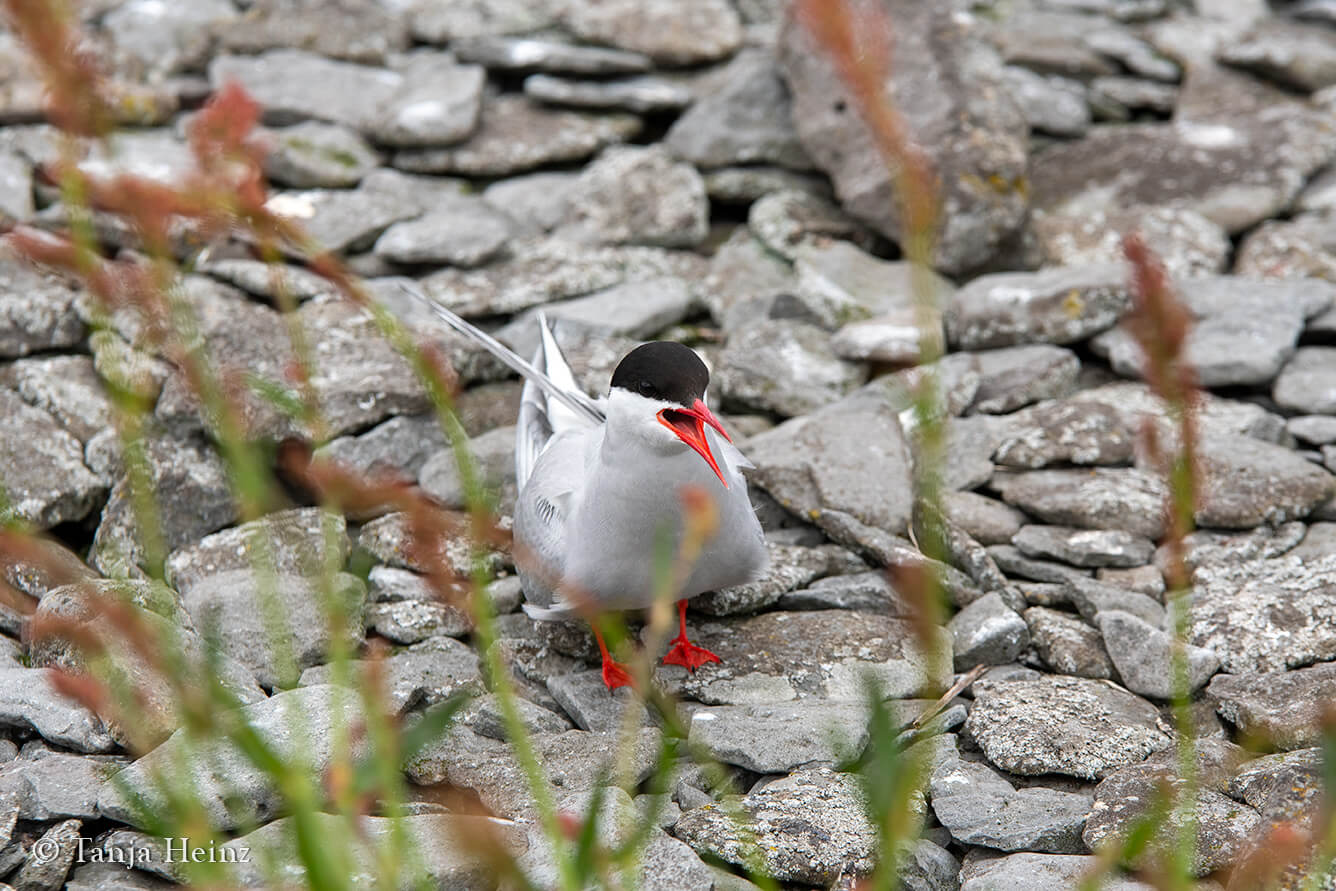
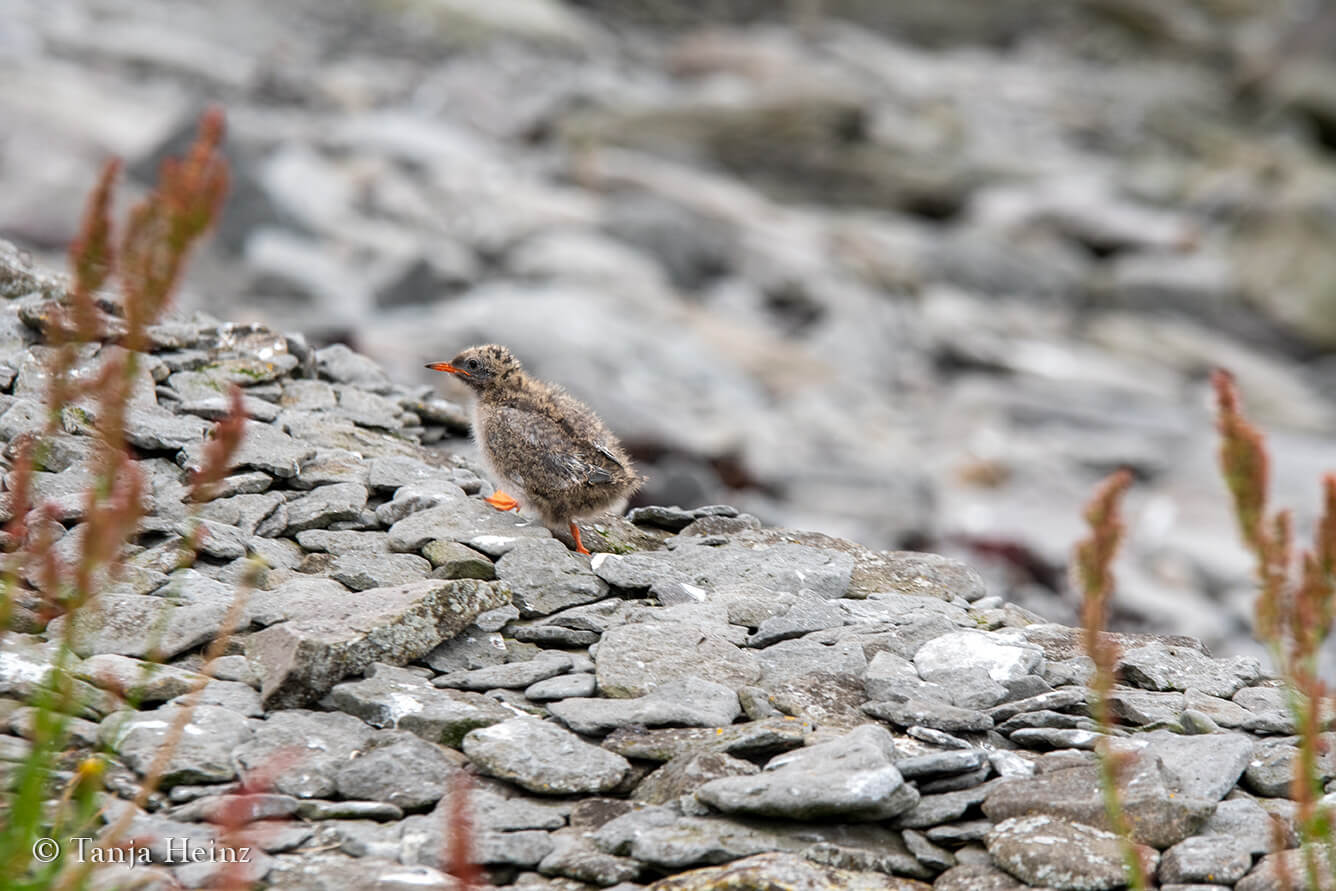
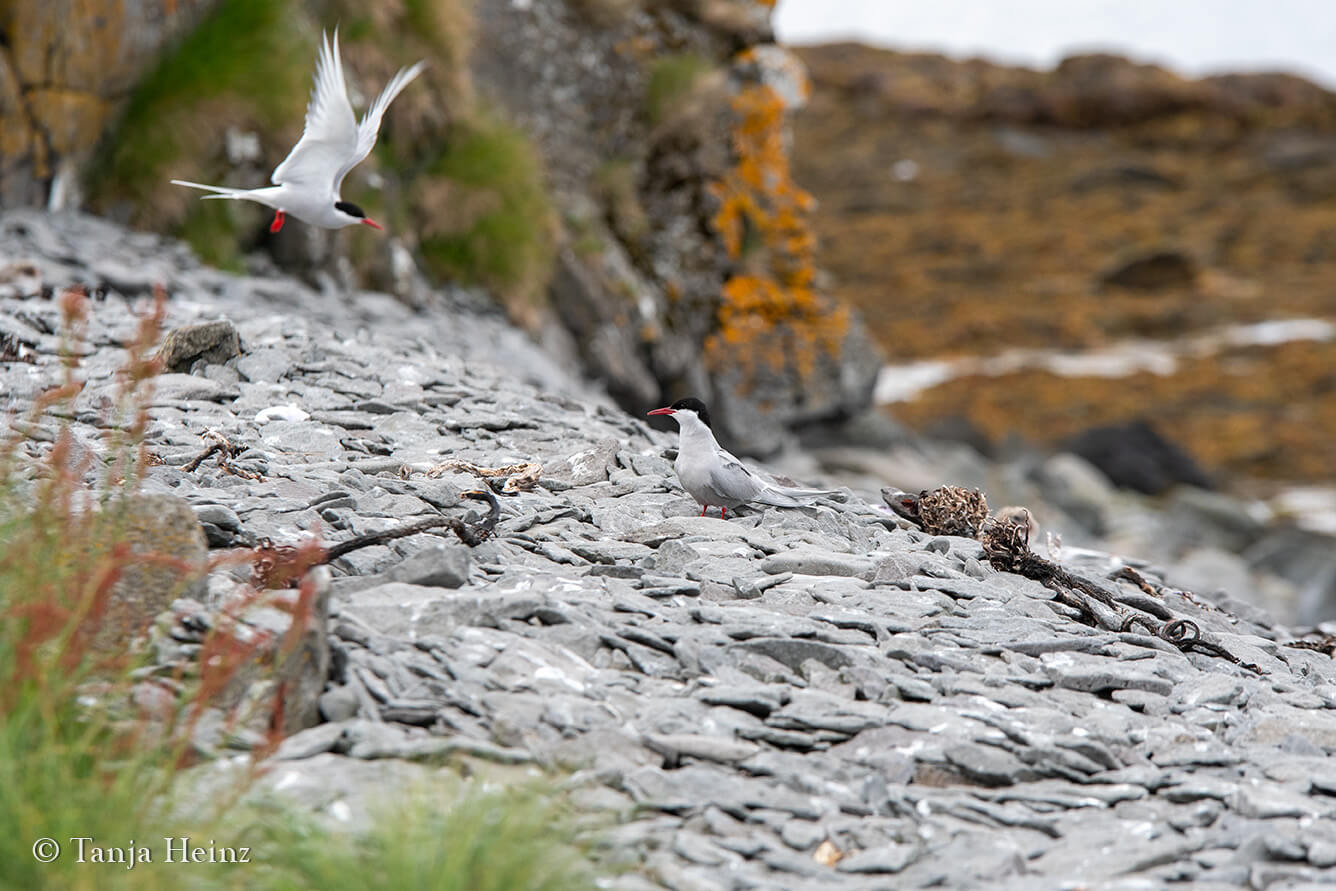
Just before getting back to our starting point, there were again quite many Arctic terns flying around or resting on stones or stonewalls, respectively.
We did not see more wildlife on Vigur Island. But if you are interested in birds, Vigur Island is a good place to visit.
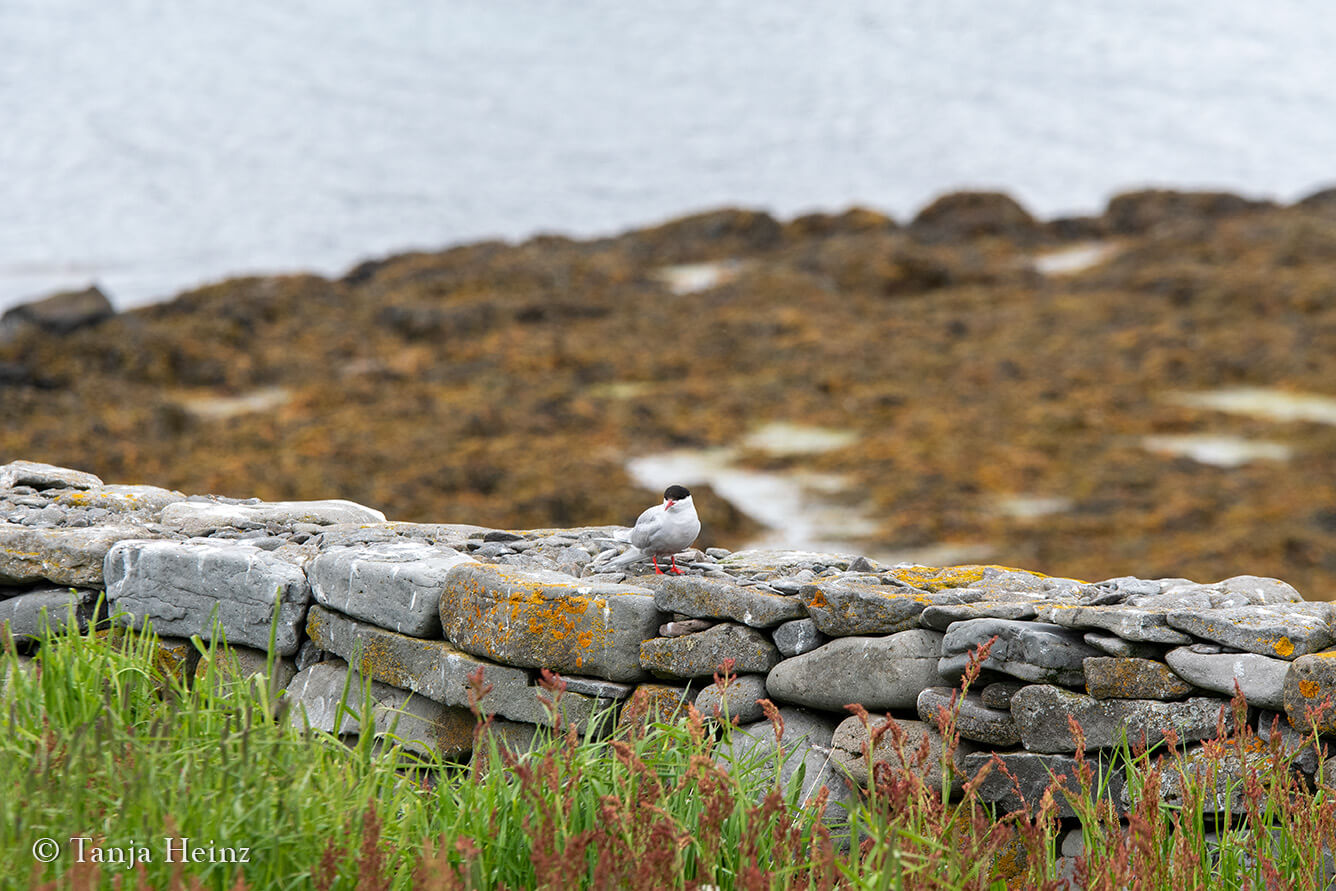
Some Arctic terns were checking their chicks.
While few chicks were moving around, most of them hid anywhere in the meadow.
Of course, we did not enter. We observed them from the pathway. But not for a long time due to their protective behaviour.
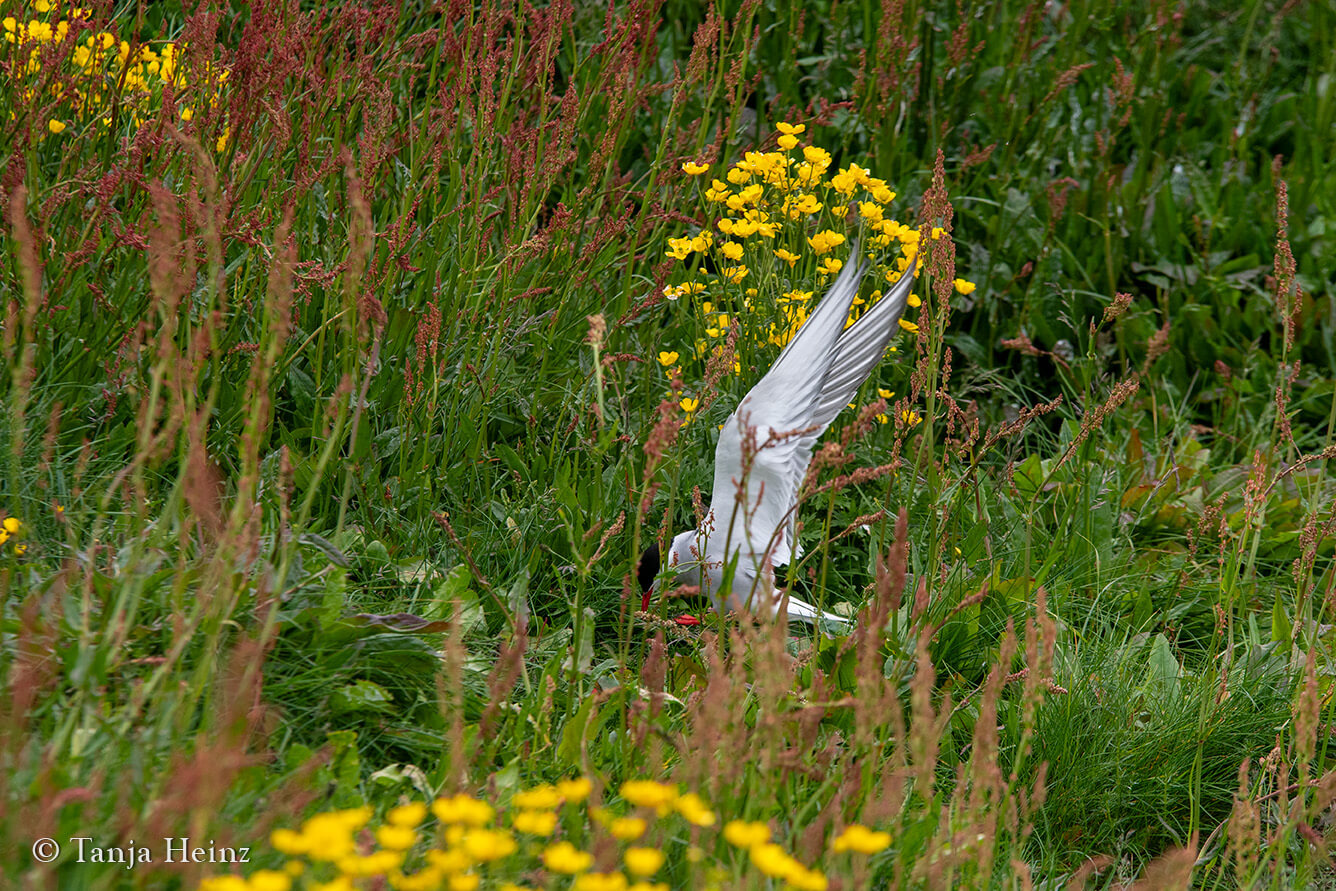
Although the island is so small, we saw so much birdlife. That was quite impressive!
After the tour around Vigur Island, we were invited to have some coffee or tea and a piece of cake.
As there was so much to see, I did not stay inside for a long time.
Common eiders, Arctic terns and puffins were probably the most common birds or wildlife on Vigur Island. But I also saw some other species. I was especially happy to have spotted a common redshank on one of the rooftops.
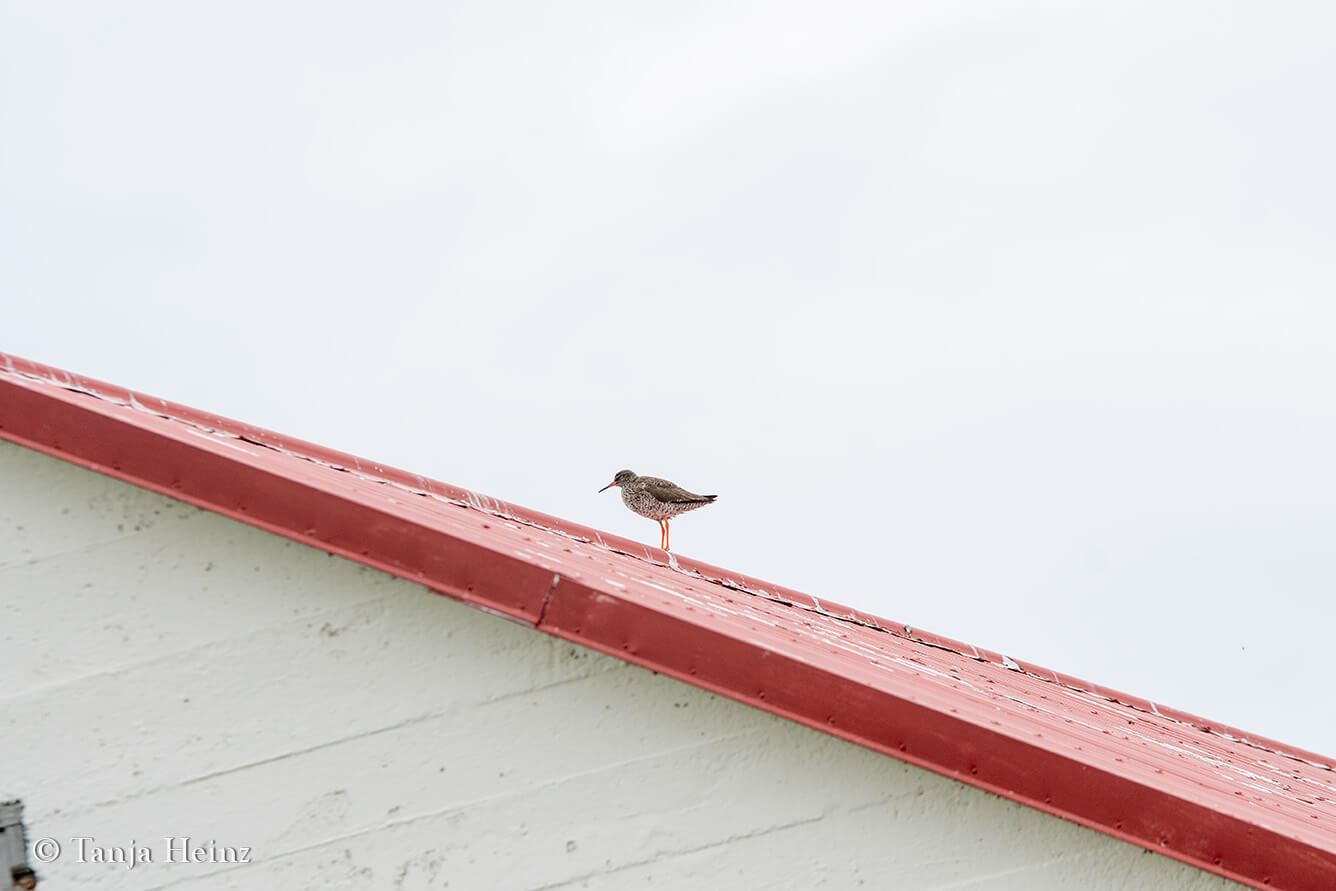
On another rooftop was again an Arctic tern.
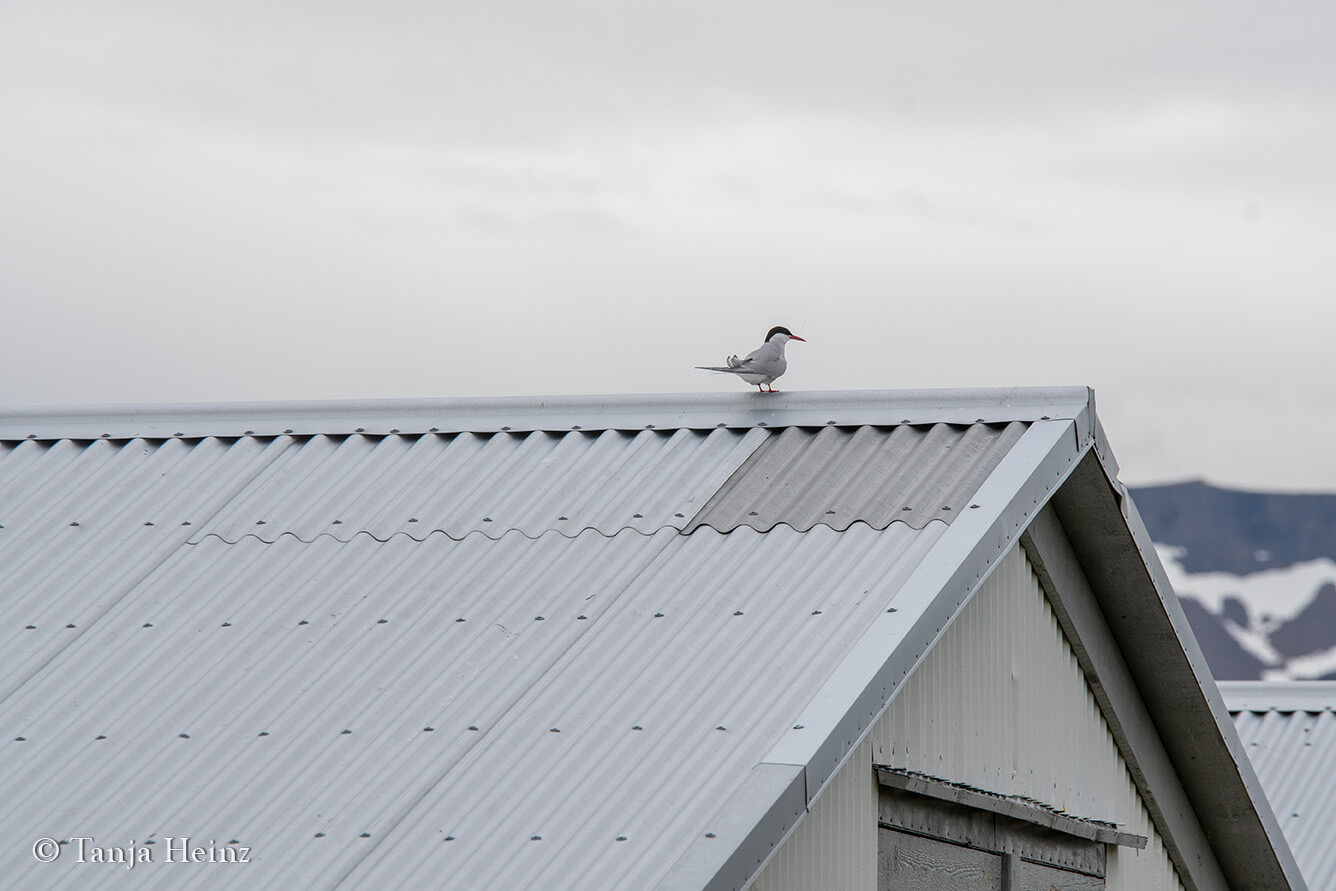
I went back to the boat where a black guillemot had laid its eggs. The adult bird was gone. Probably and hopefully just for a short moment...
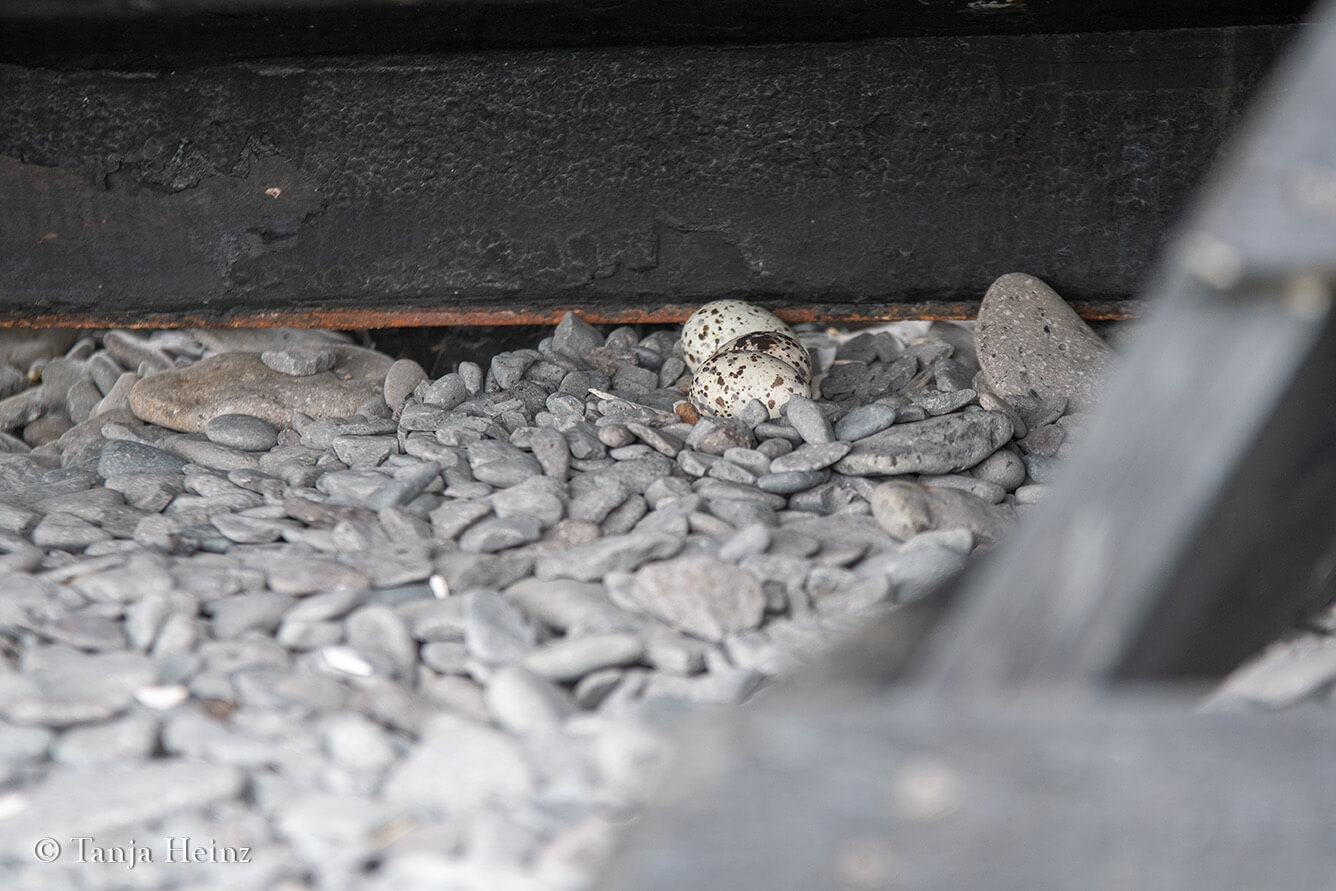
On Vigur Island, black guillemots seemed to have found almost everywhere a place to nest.
It was interesting to observe all the places from where a black guillemot emerged.
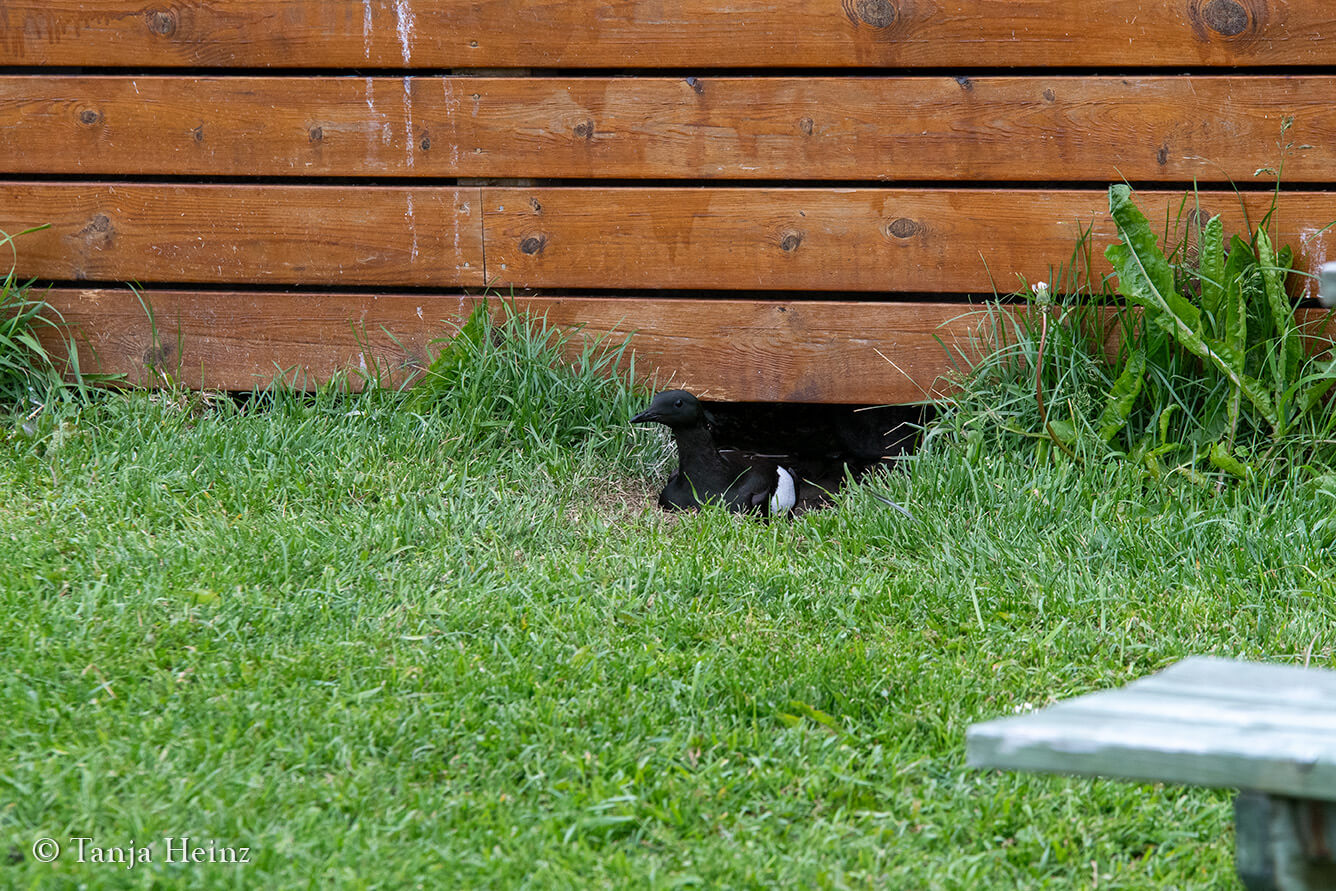
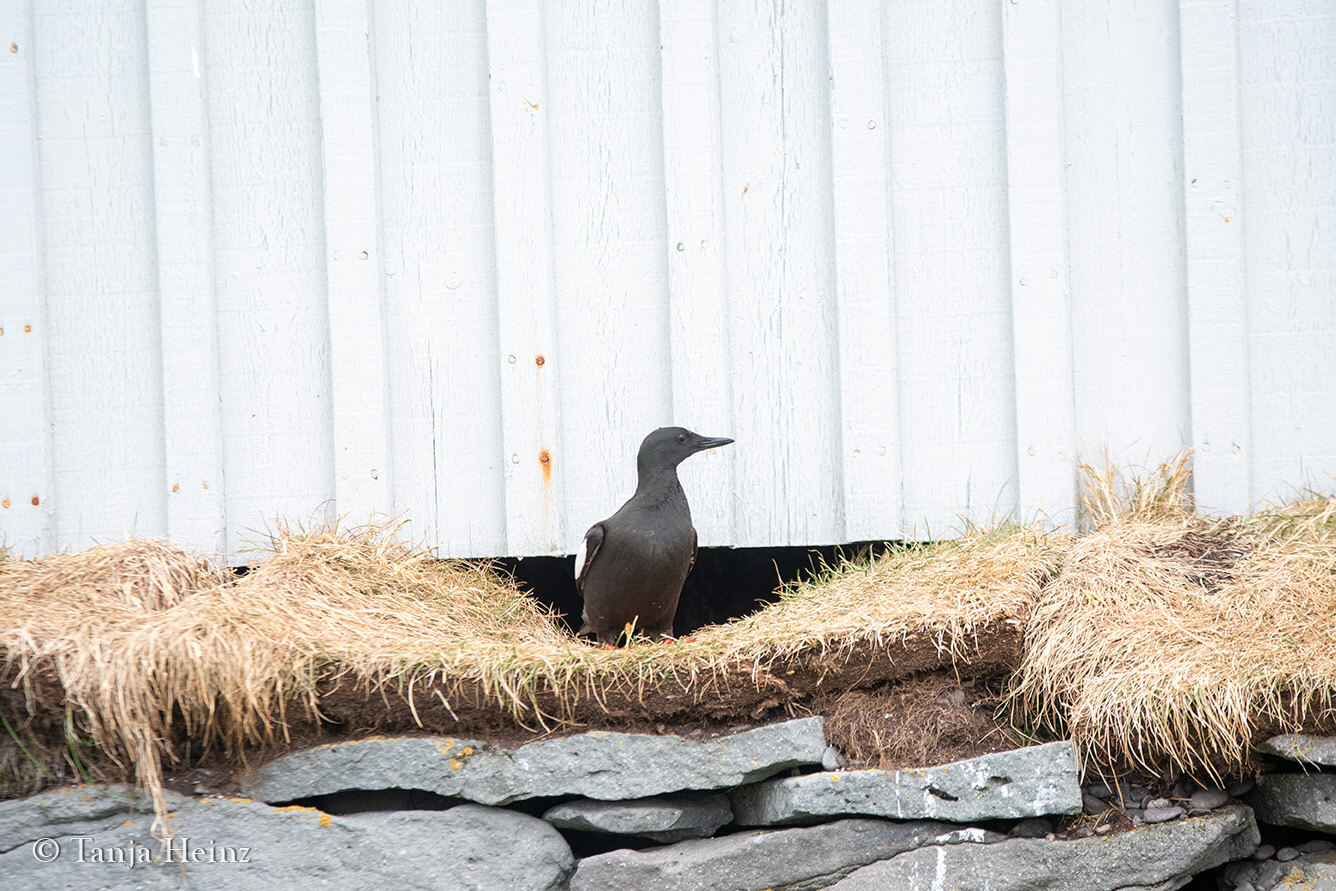
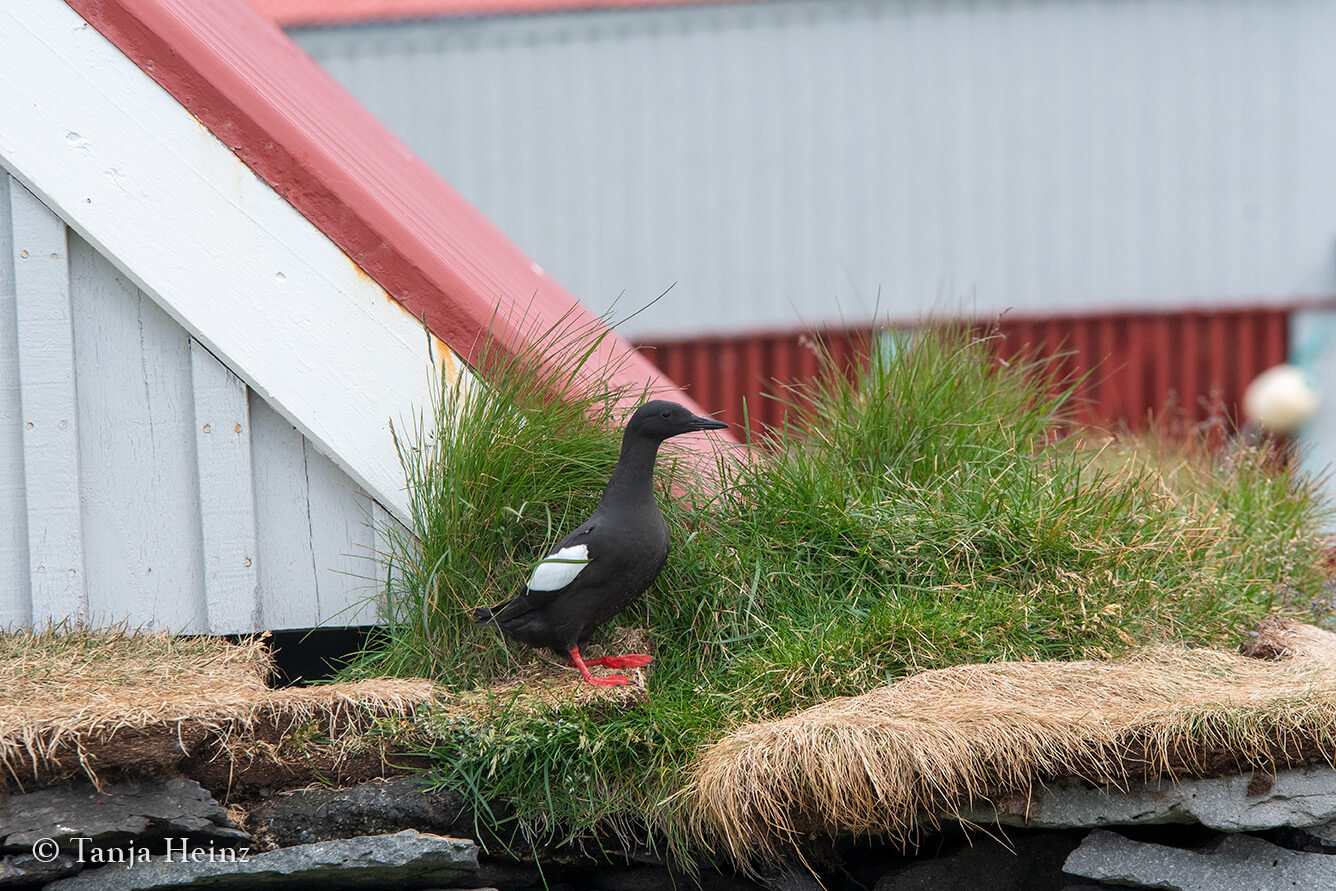
Some were even lying in the middle of the mowed meadow.
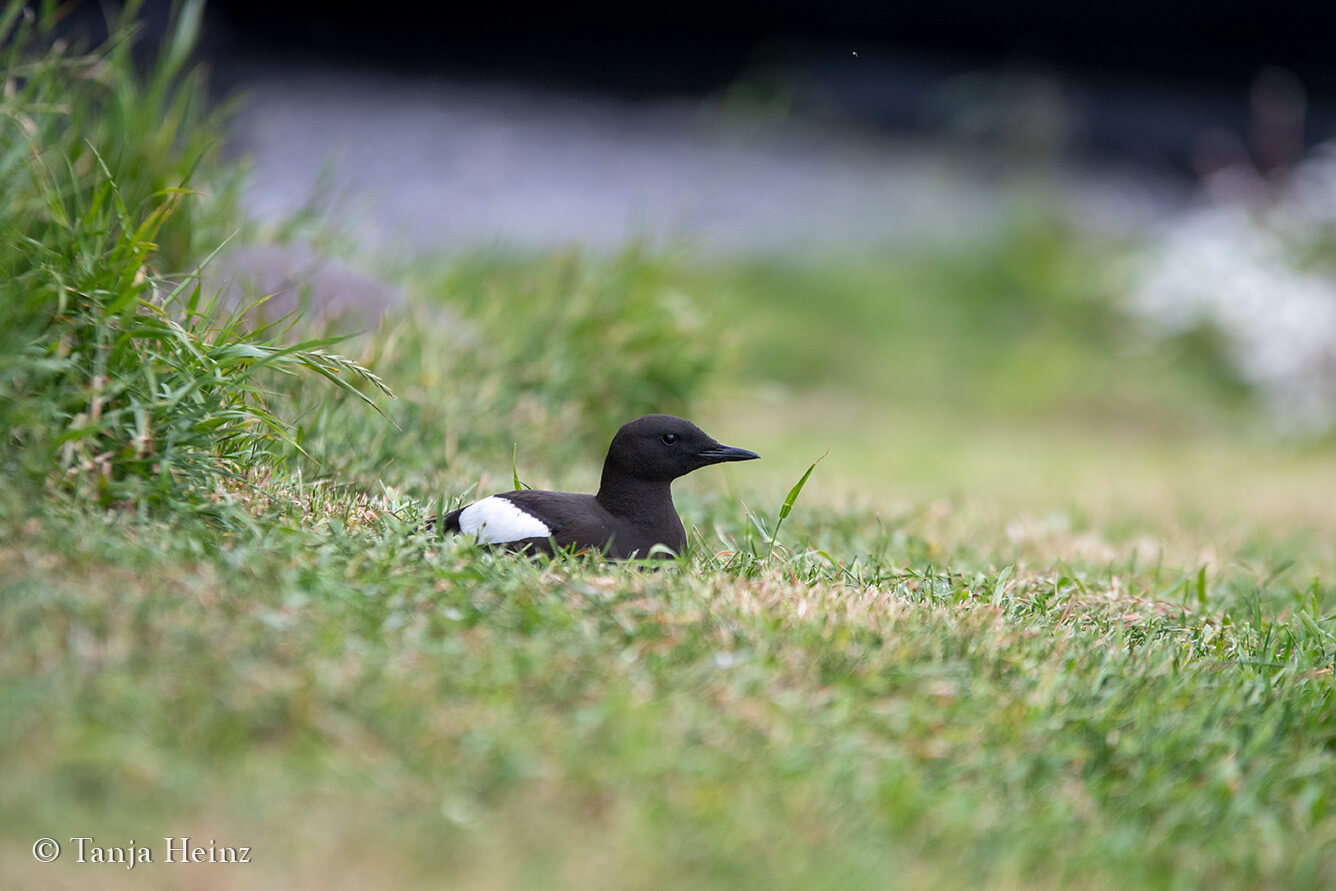
Or among stones.
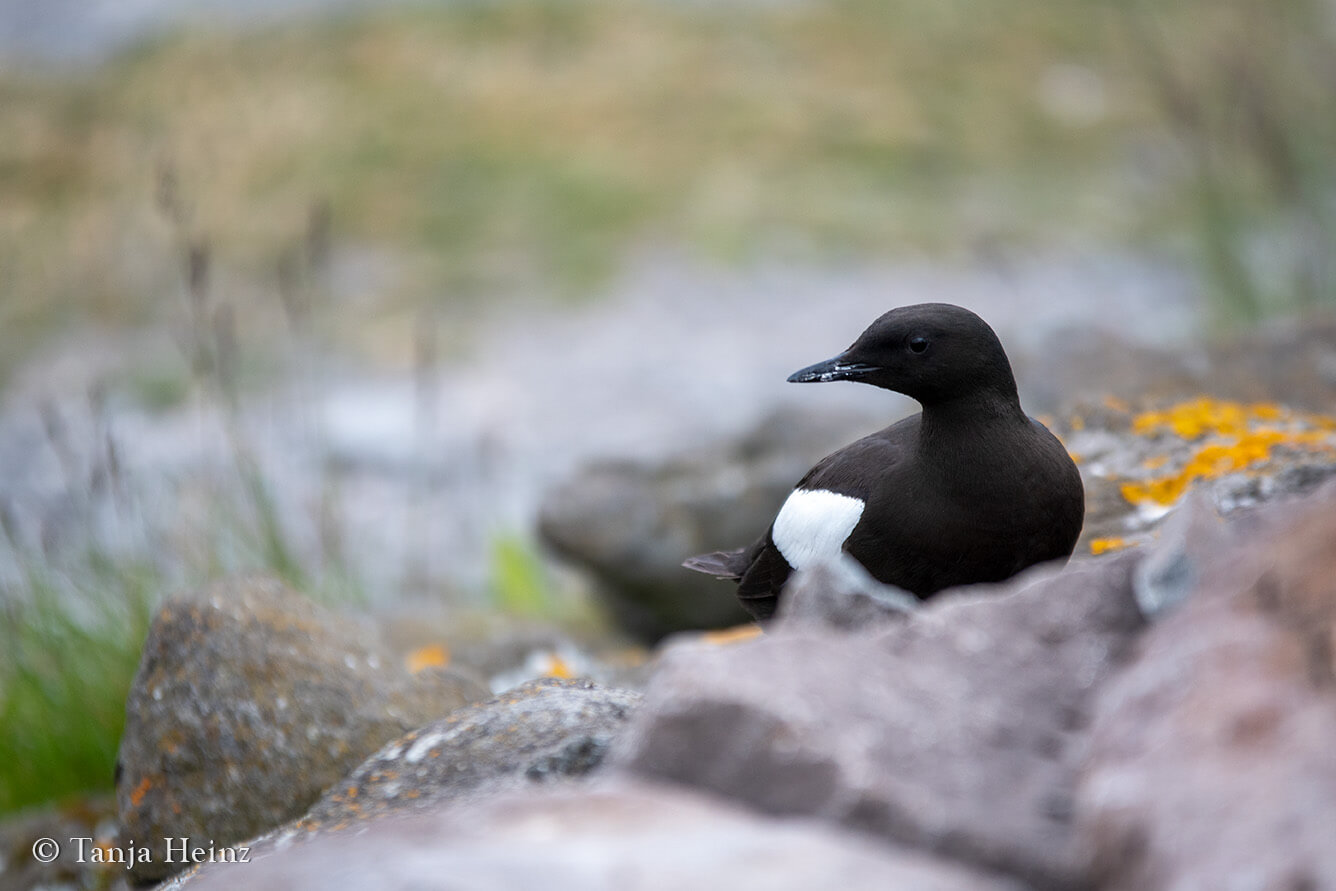
Indeed, I saw more black guillemots on Vigur Island than common eiders.
However, it might also be the case that most common eiders were at the sea. At least I saw several of them swimming in the water. Including males.
I did not see any male common eider duck on land.
Just females and some chicks.
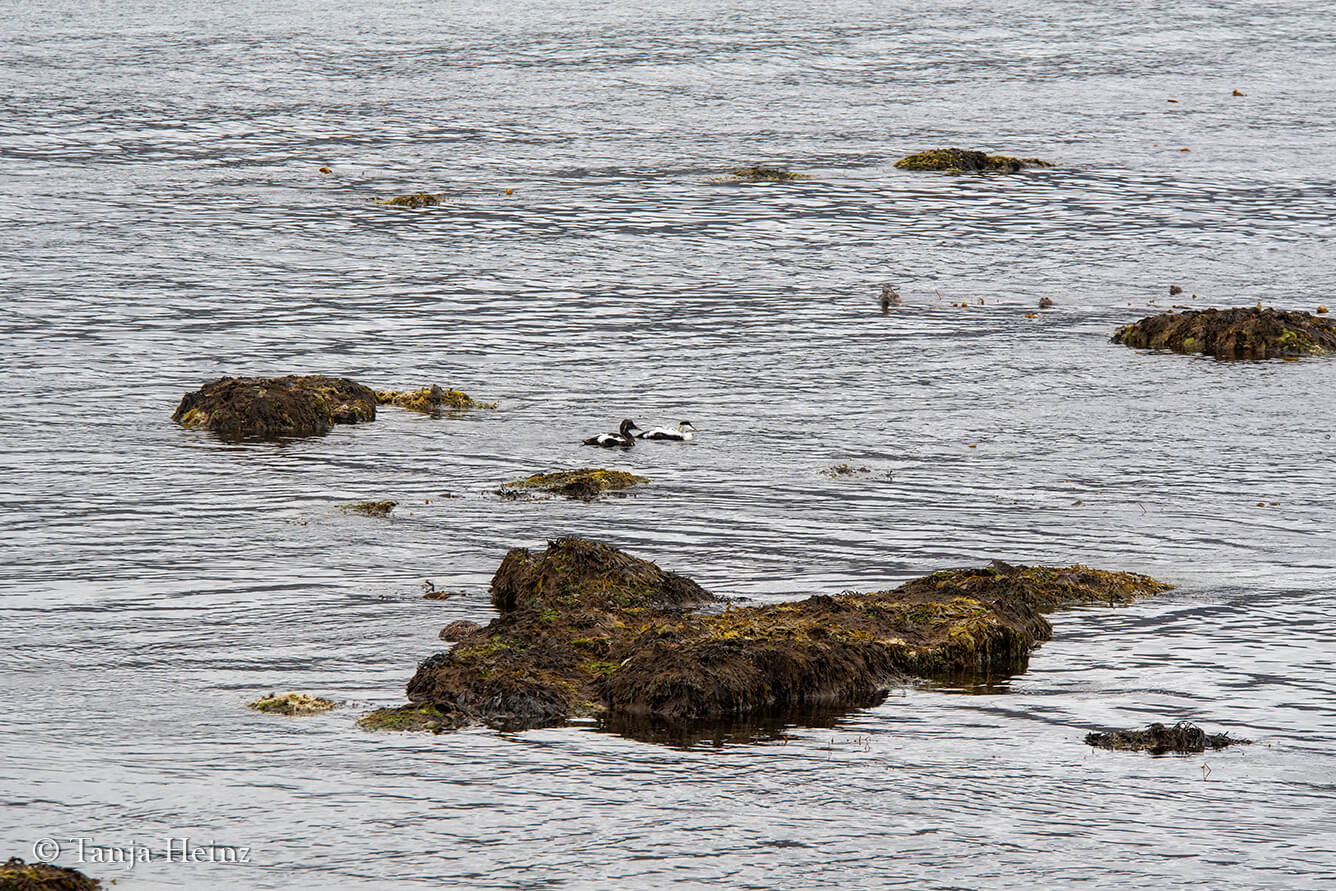
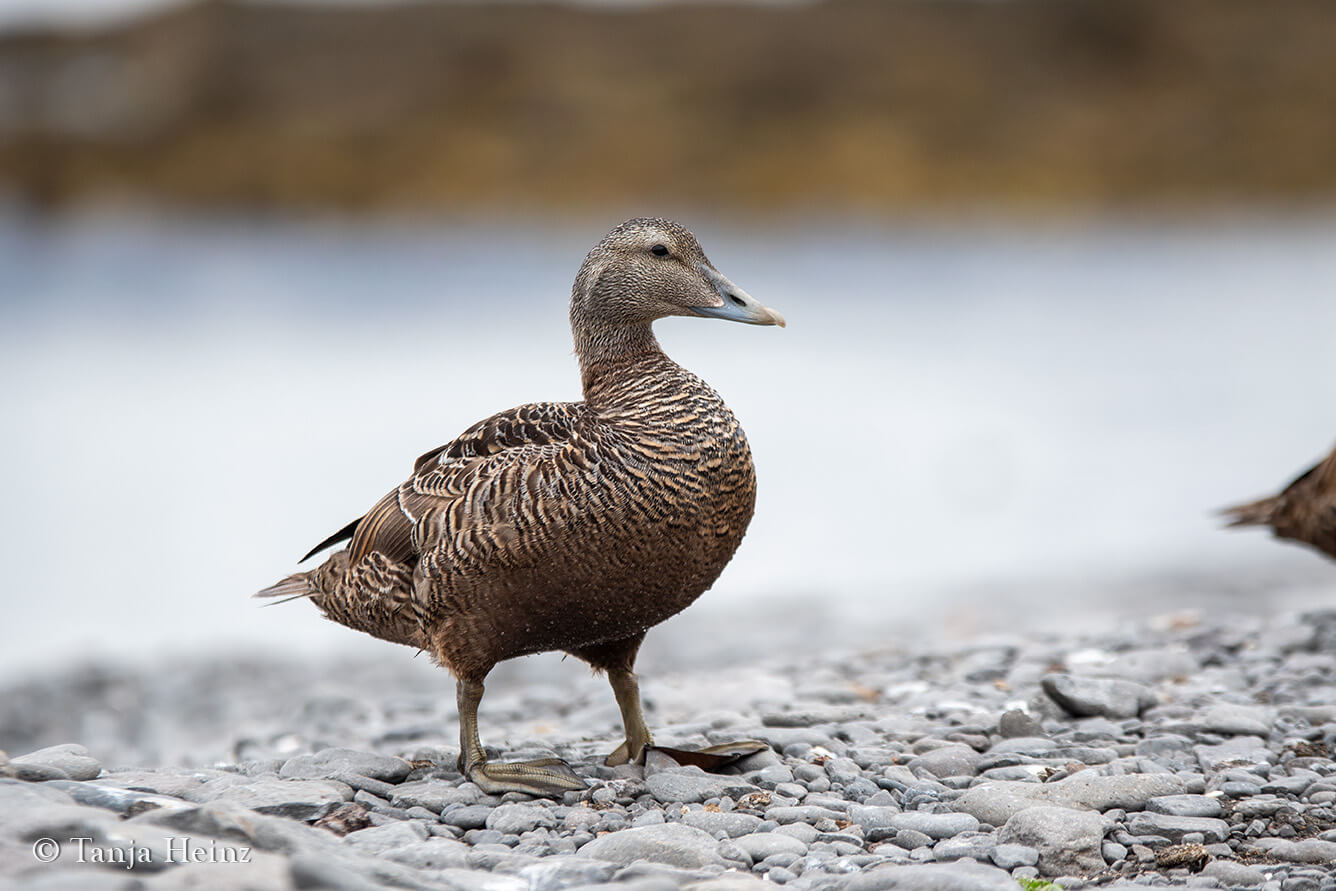
When we saw already the next groups arriving and beginning their tours with the wooden stakes, we headed back to the boat.
I did not check the time on the island, but we stayed more than an hour on Vigur Island.
Probably around one hour and a half.
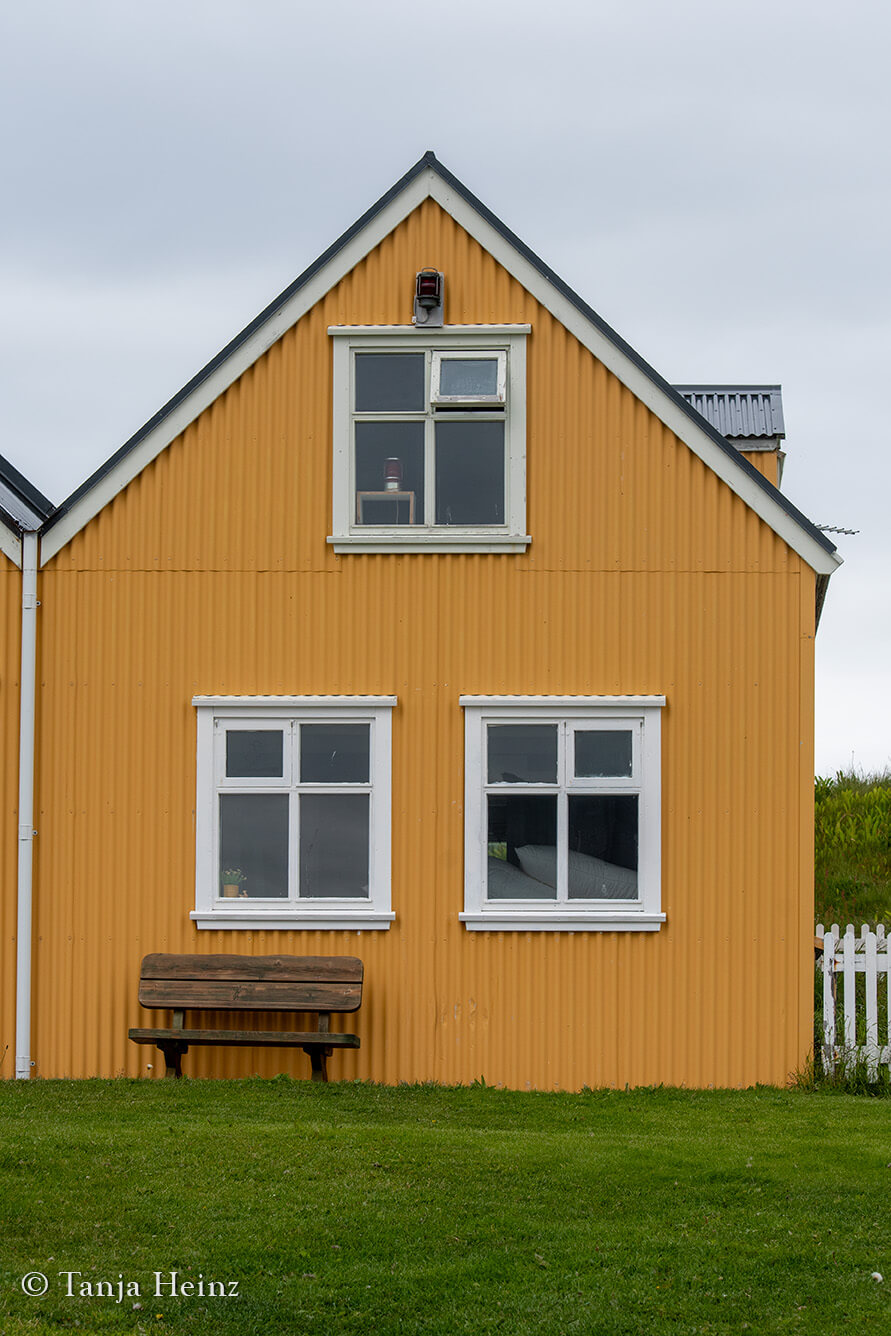
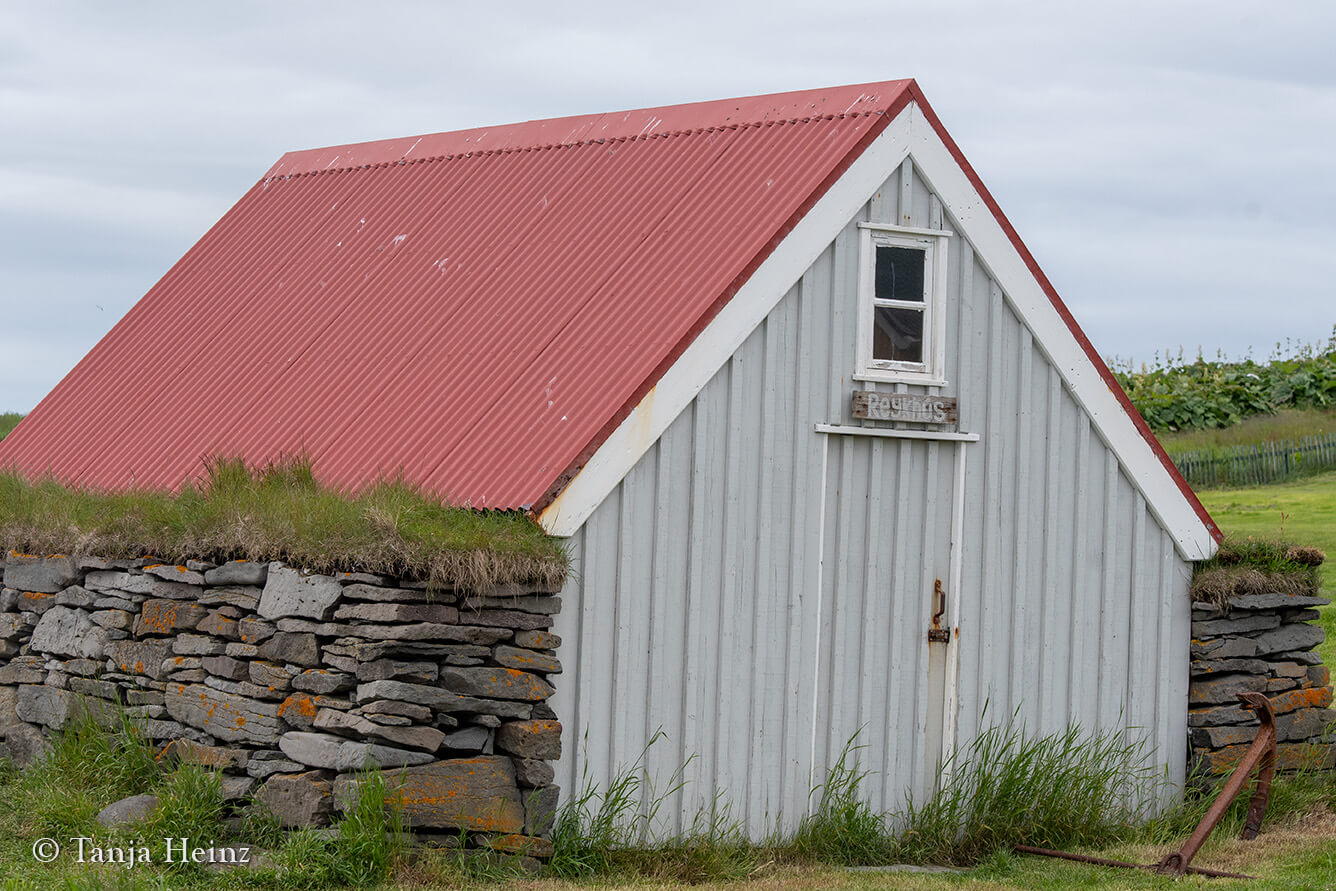
Before entering the boat, I saw another black guillemot.
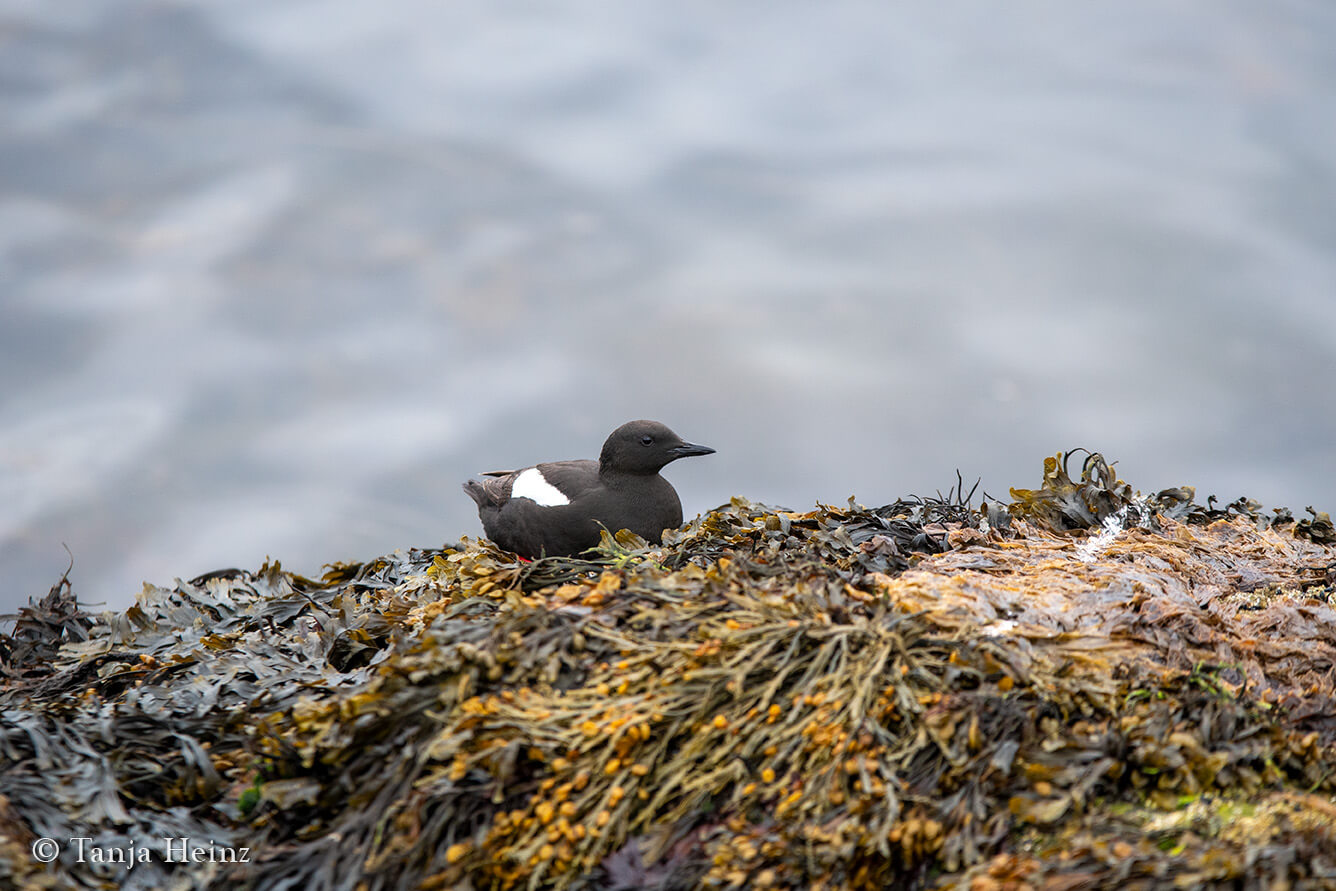
Information: Vigur Island is a small island with only about 0,59 km2 and a length of 2 km from north to south and 400 m from west to east. The island is home to a single family.
How to get to Vigur Island
The best way to get to Vigur Island is through a tour. I participated in a tour organized by West Tours. It was a 3-hour-long tour and started at 3 p.m. I paid 13.800 ISK for the whole tour.
Meeting point was at the harbour in Ísafjörður.
Please visit the website of West Tours to get more up-to-date information.
More information
Website of Vigur Island
The Arctic Fox Center in Súðavík
Arctic foxes in the Hornstrandir Nature Reserve
The Eider Keepers on bioGraphic
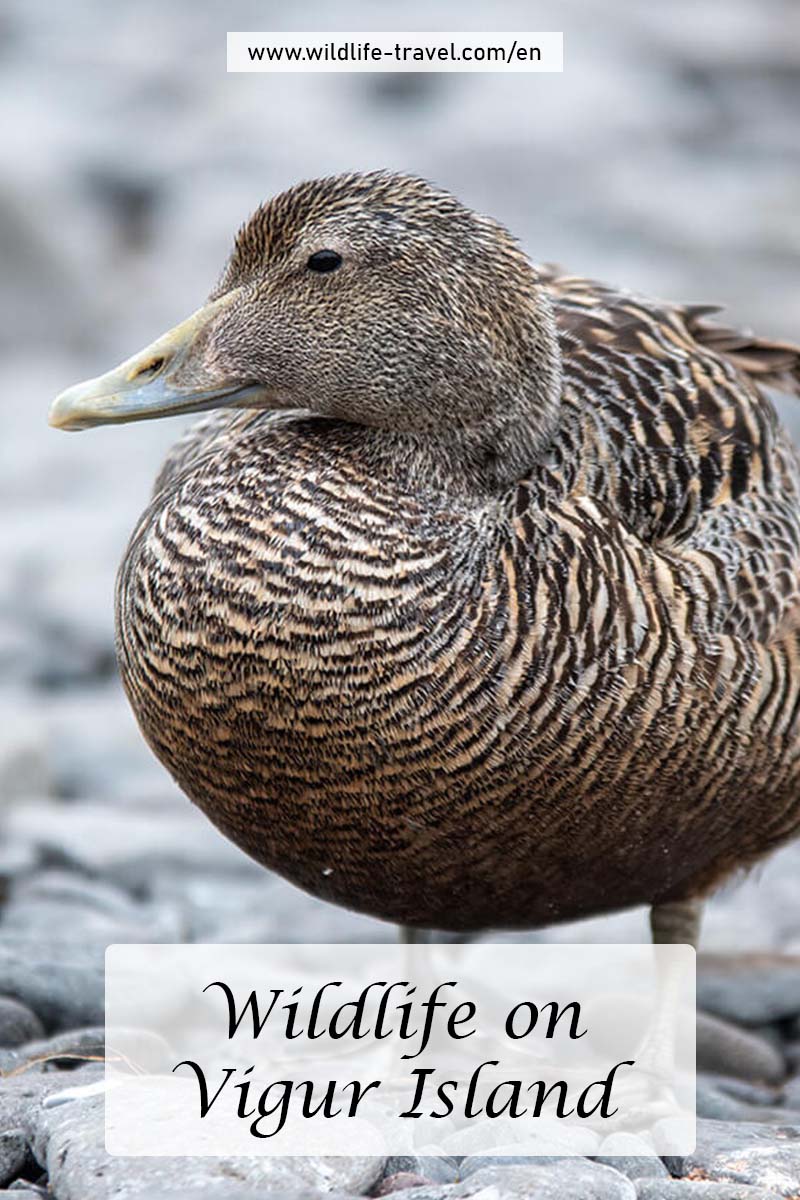
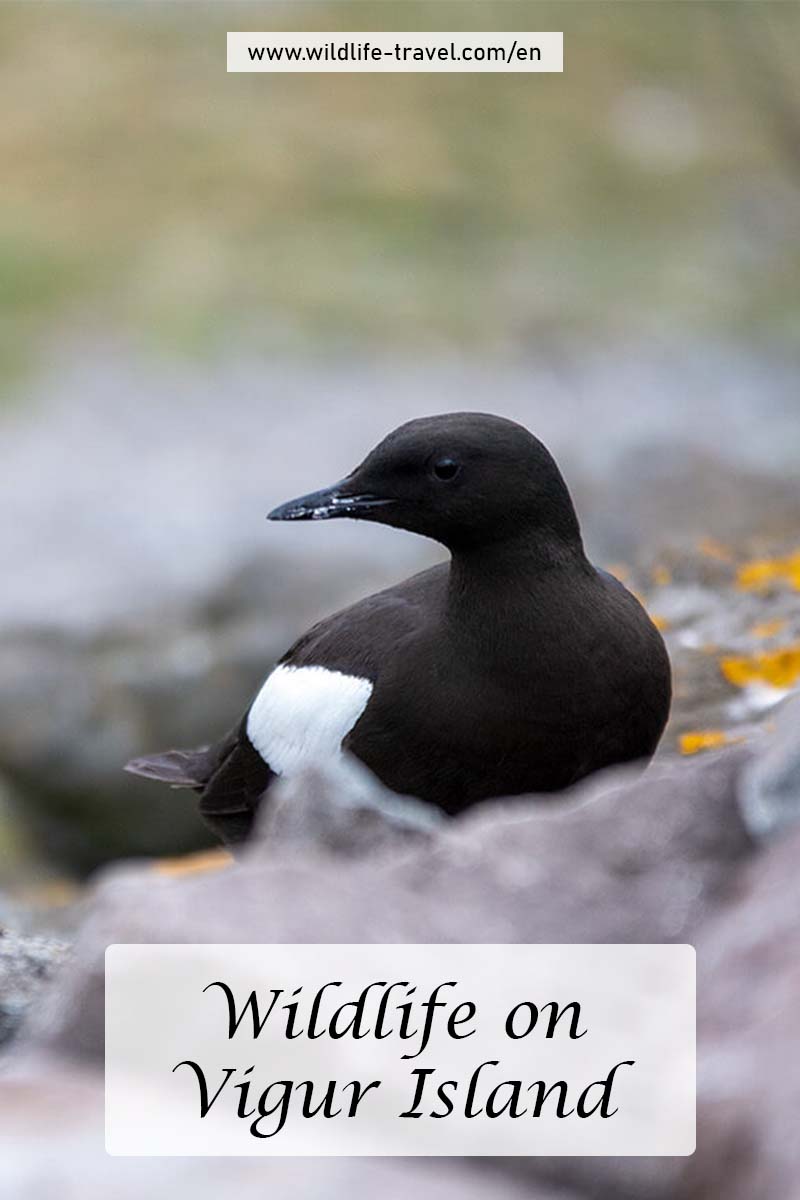
Have you ever been on Vigur Island? Or do you know the region around Ísafjörður? Please let me know in the comments about your experiences in the north-west of Iceland.

I’ve been researching Vigur island and birding. What lens did you use for the puffin photos; or how far away were they from you? I need to limit my camera gear due to luggage weight restrictions.
Thank you.
Thank you very much Monica for your comment and sorry for my late reply!
I used a 70-200mm f/2.8 lens and a Nikon D500 camera (which is a fast camera, and thus, good for wildlife photography). In some moments I wished that I would have brought my 150-600mm Sigma lens with me, but I understand if you need to limit your camera gear because of weight restrictions. It was also a hard decision for me… I hope my answer helps you and that I was not too late before you travel to Vigur Island.
Best wishes,
Tanja